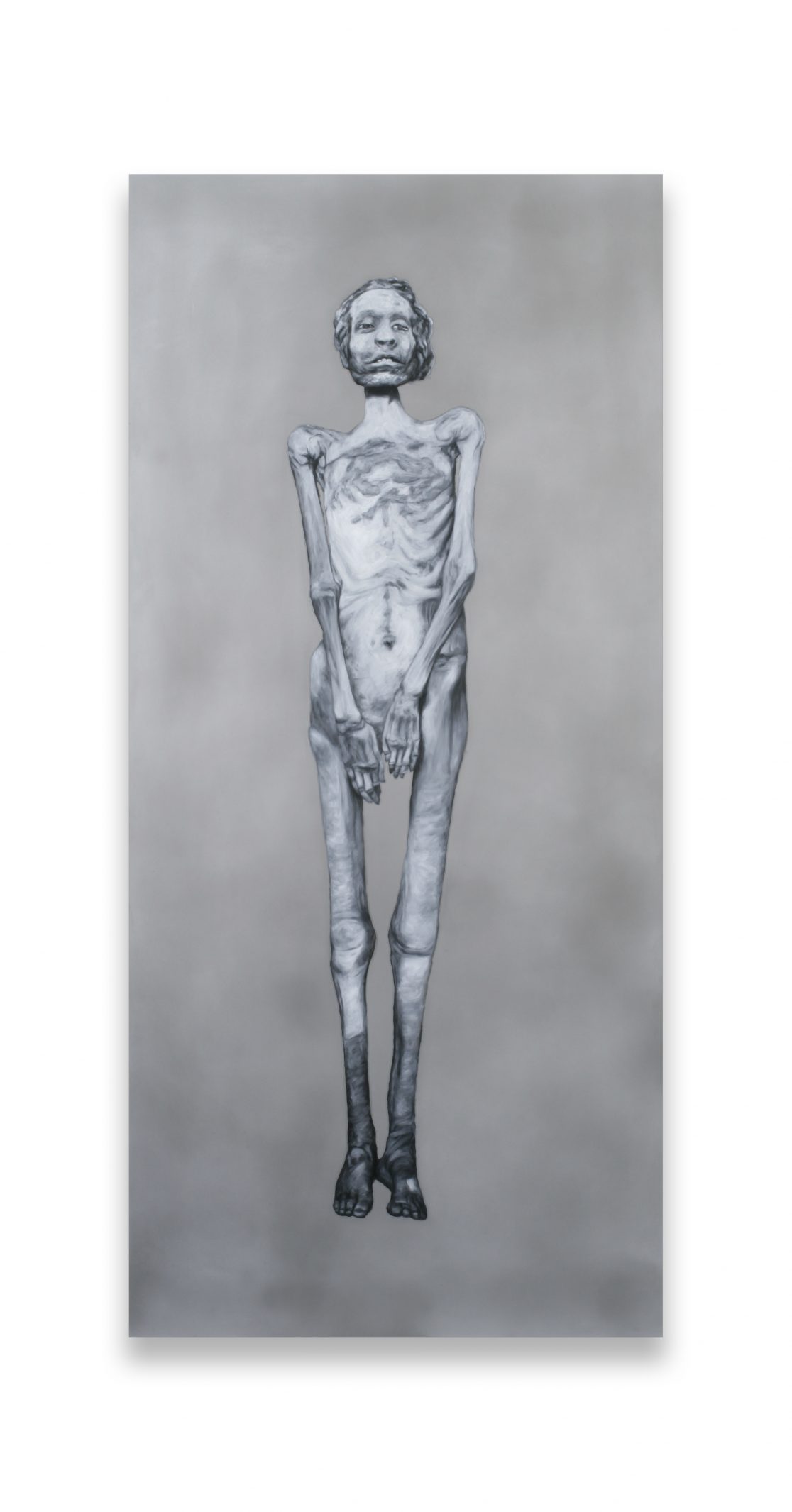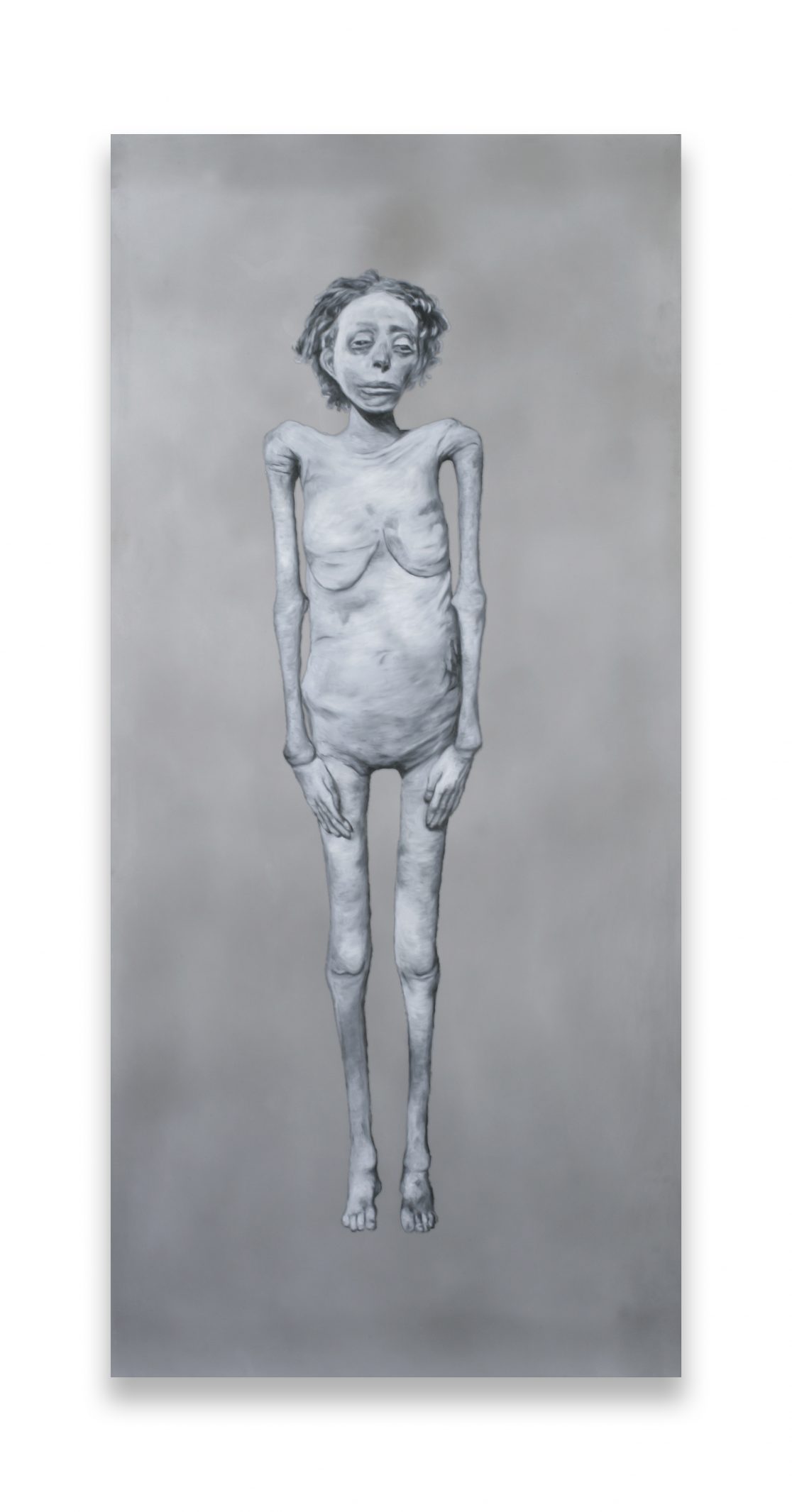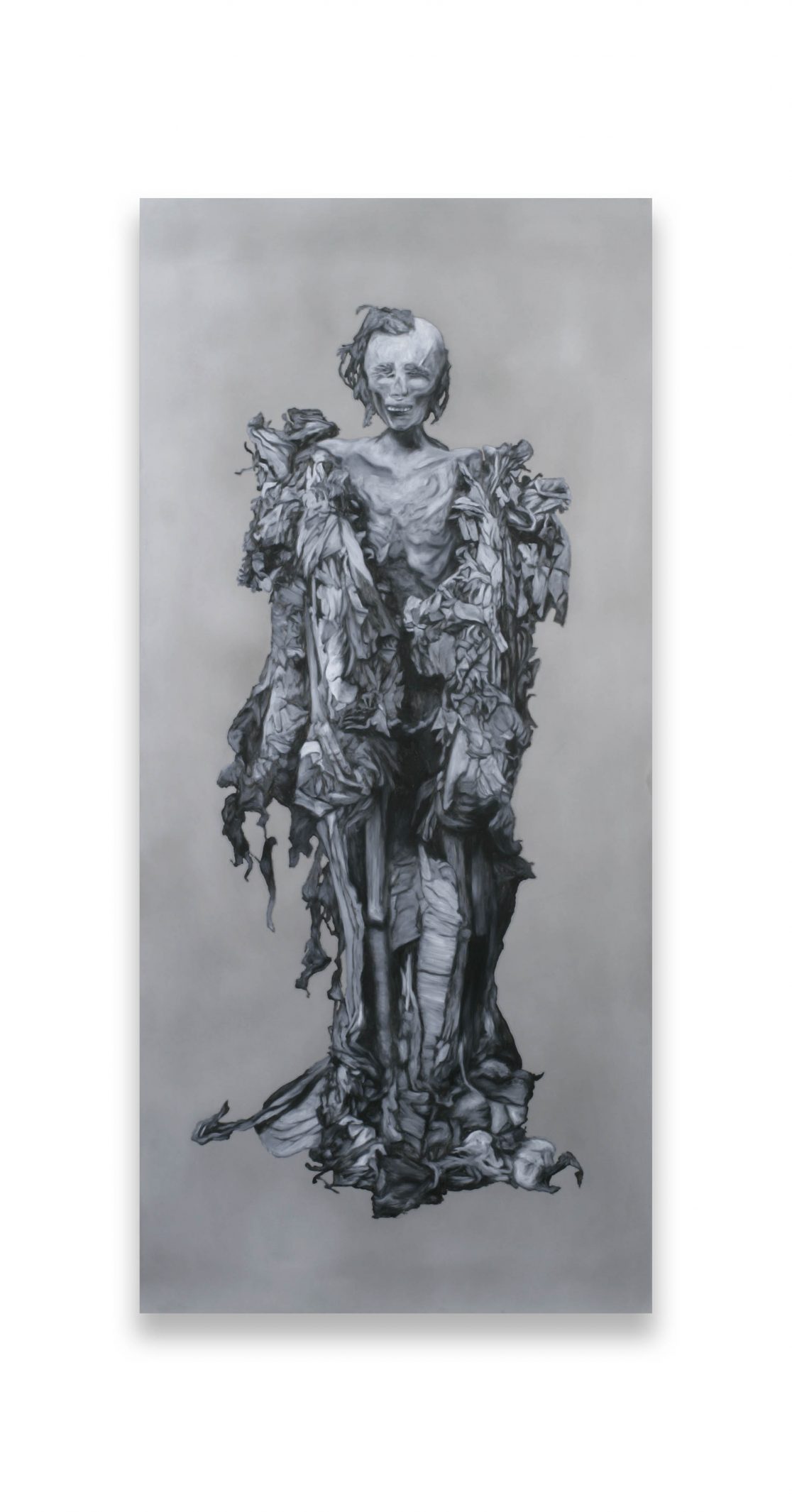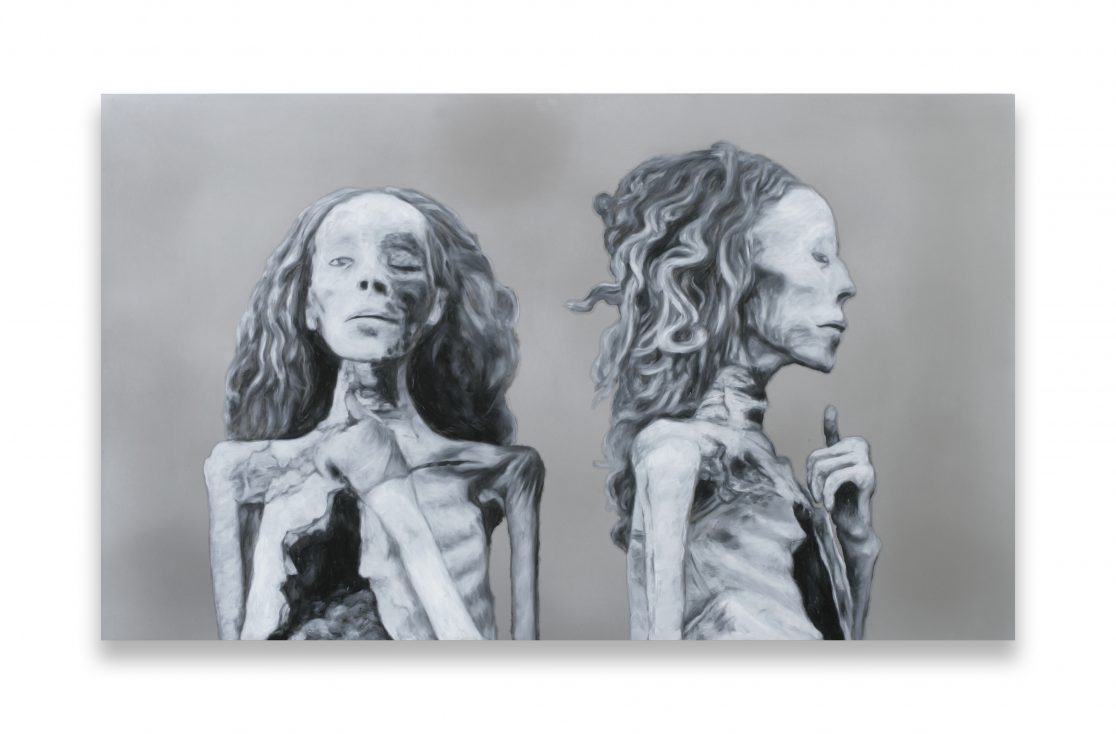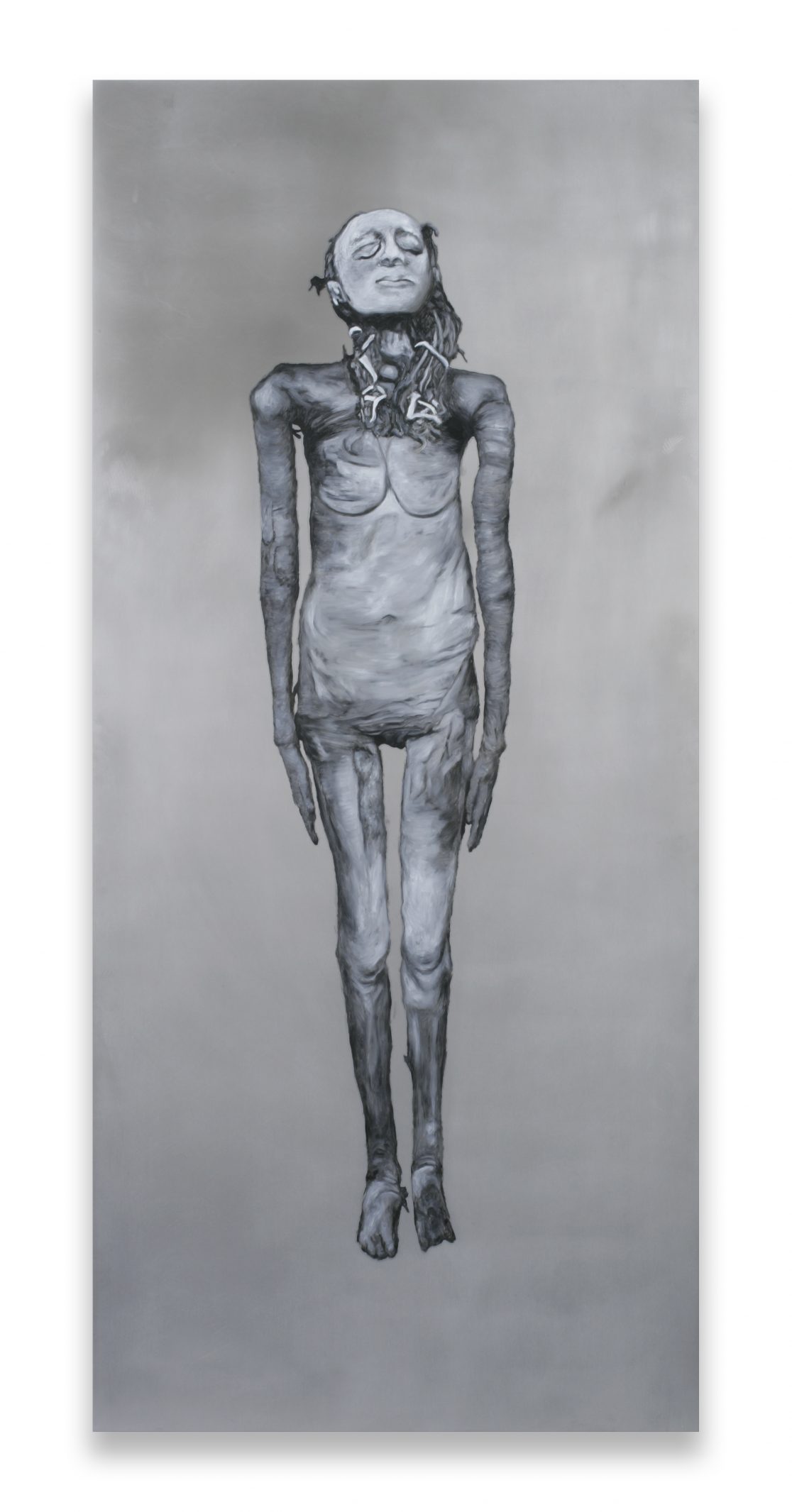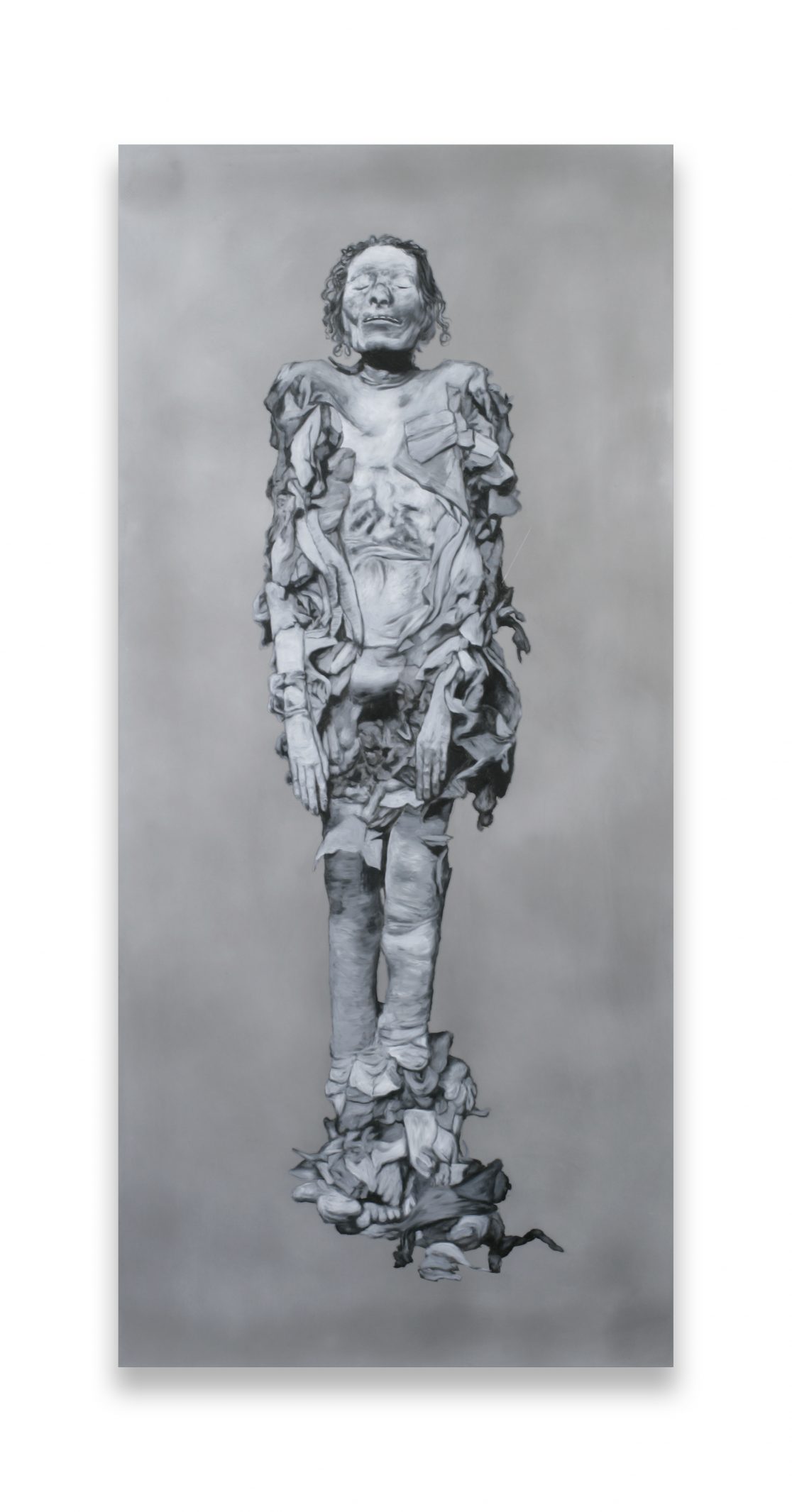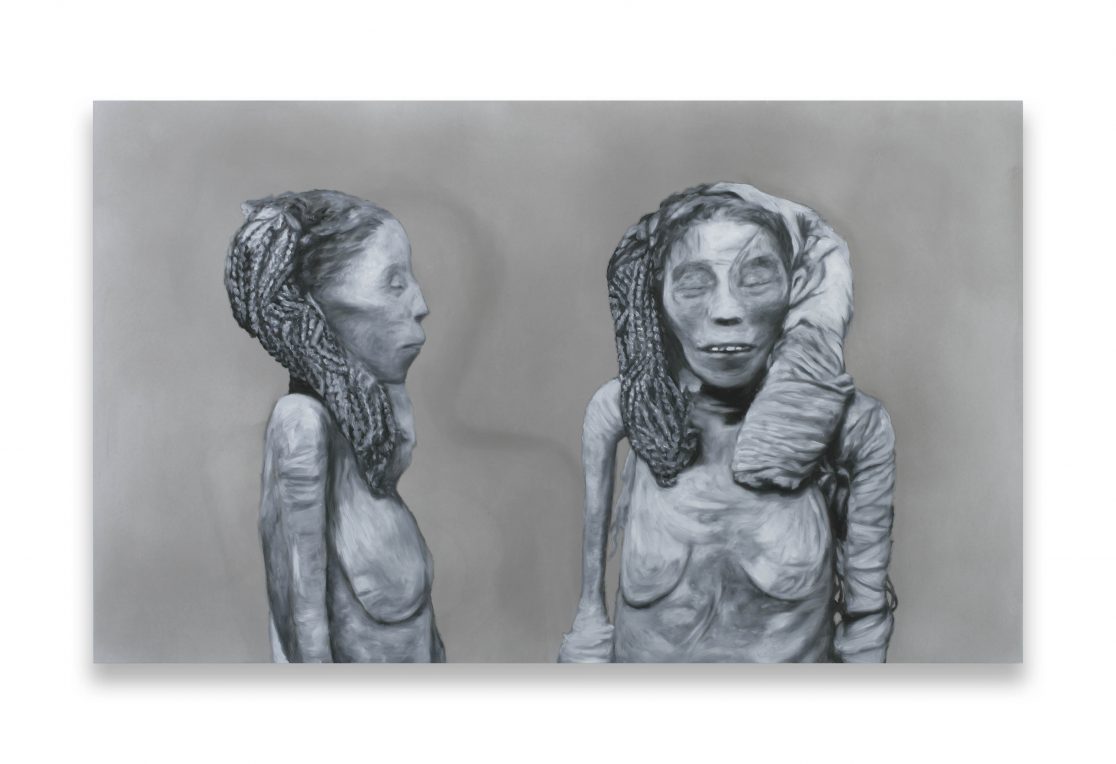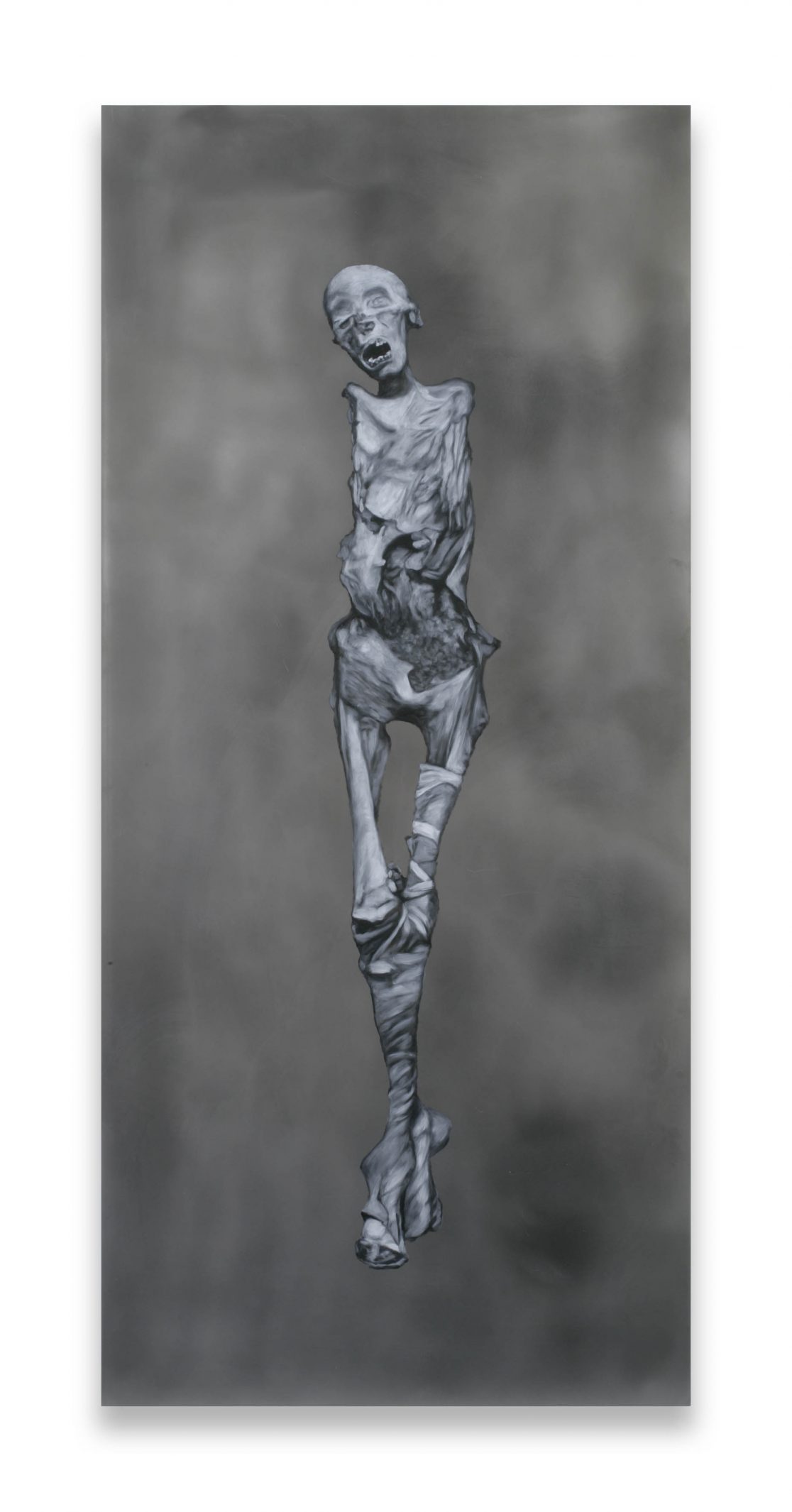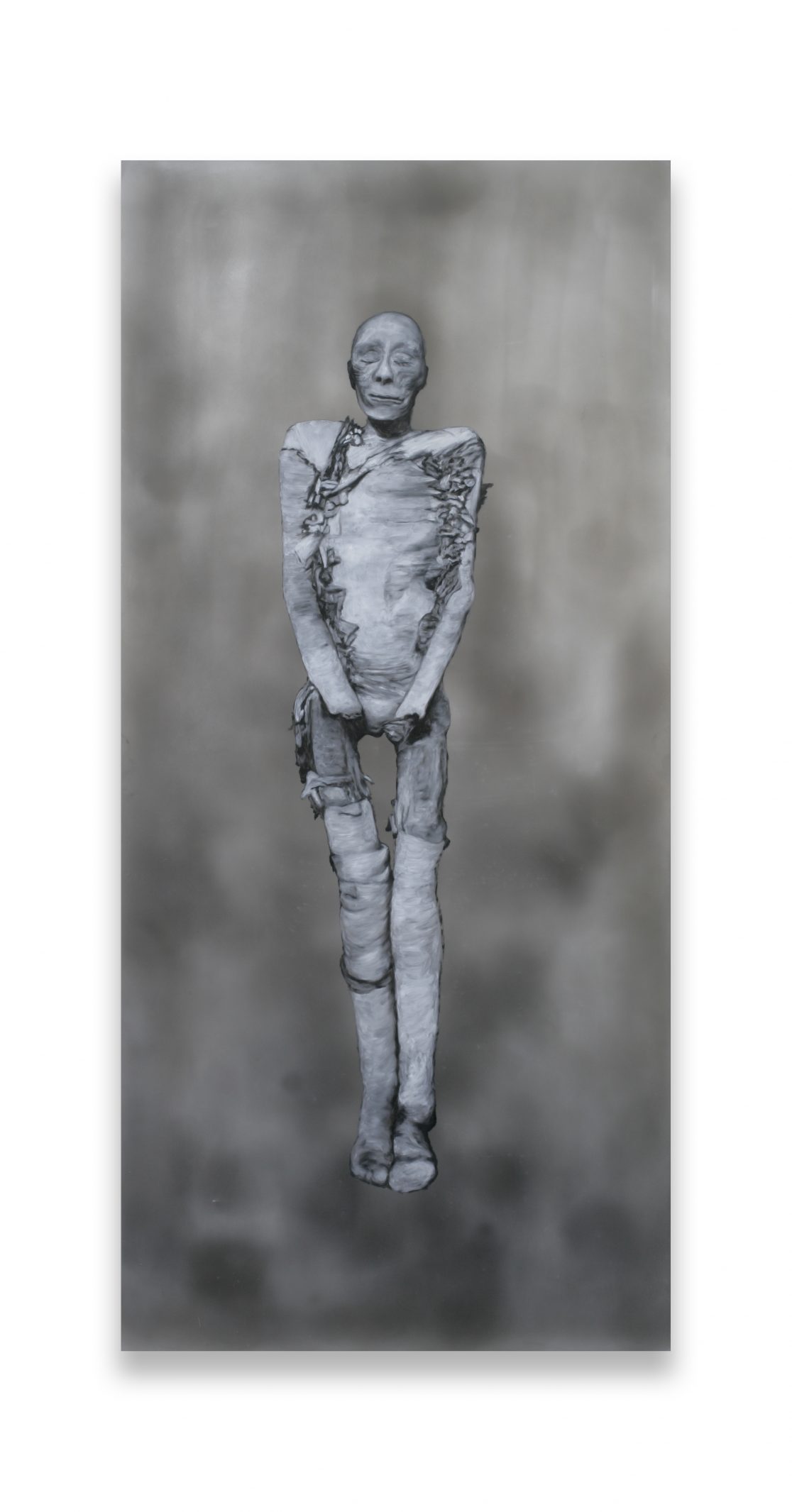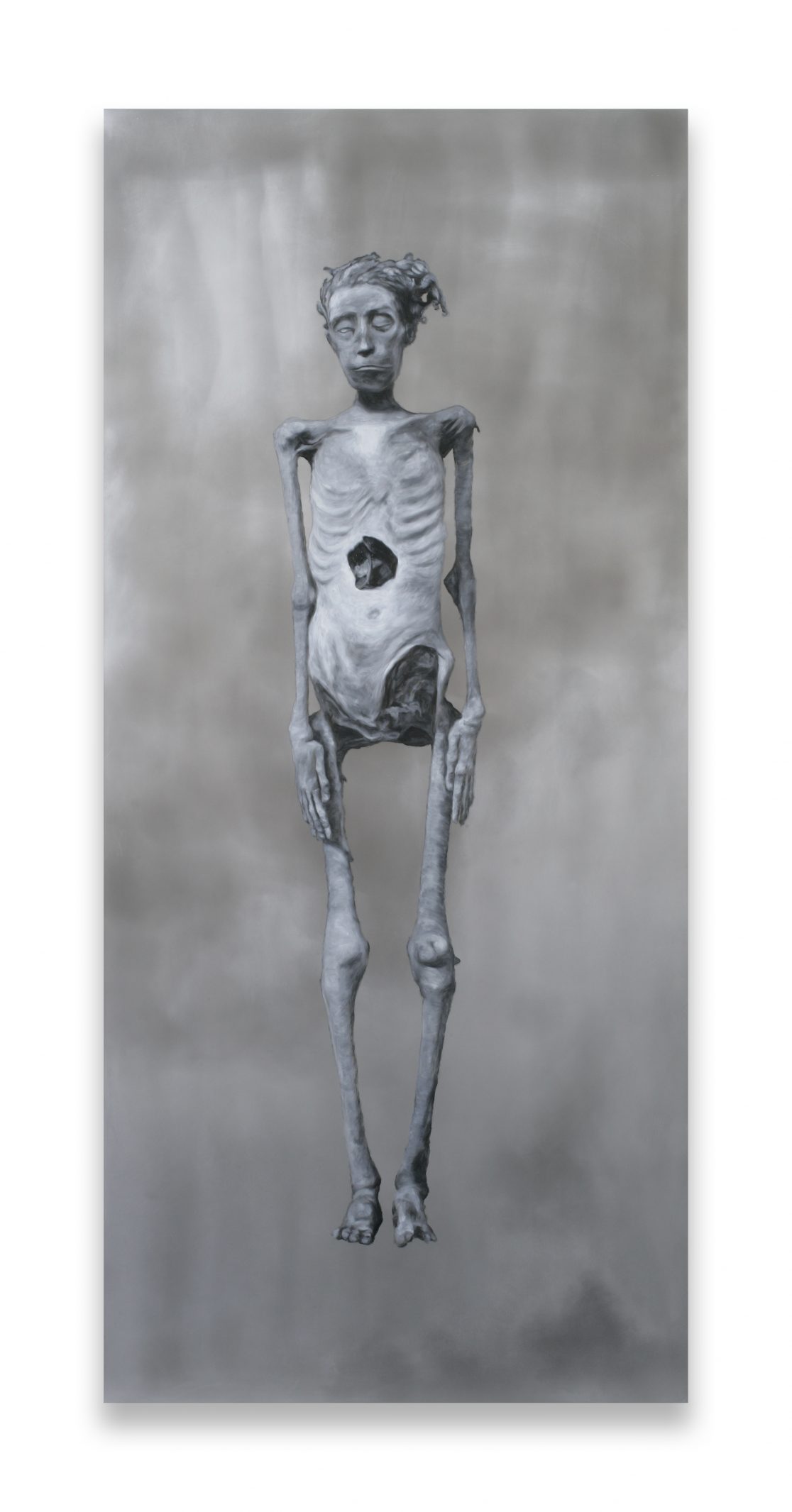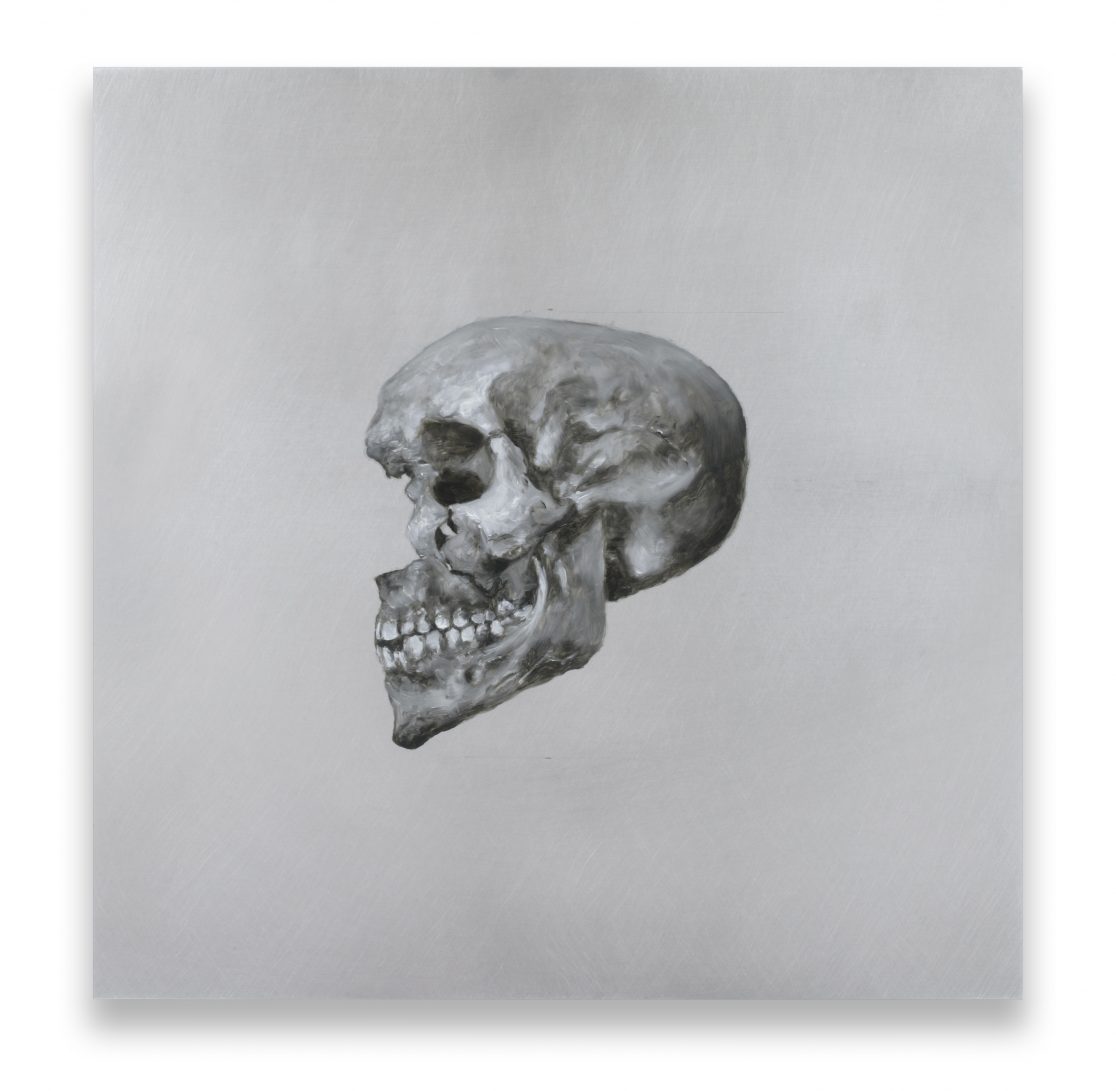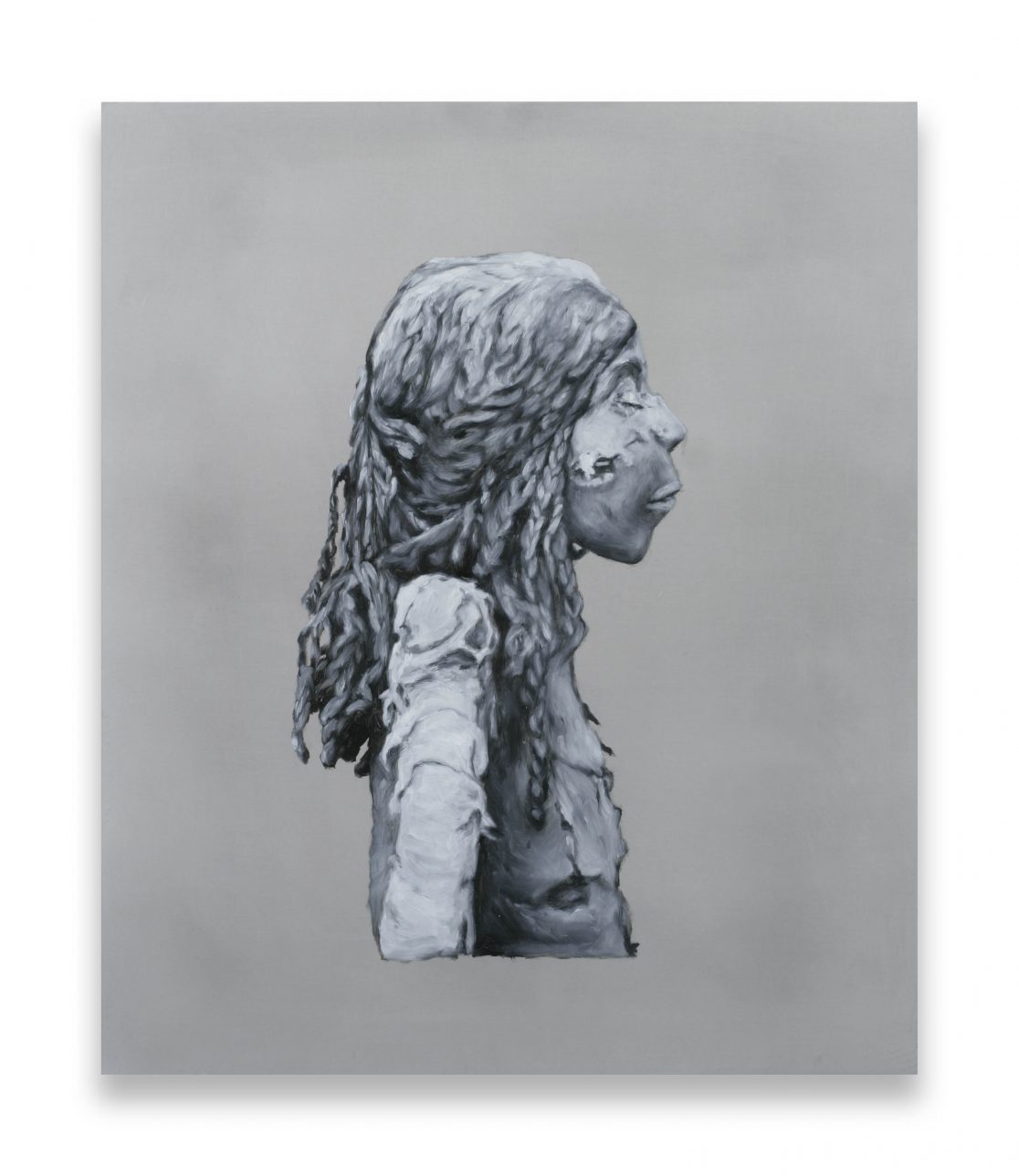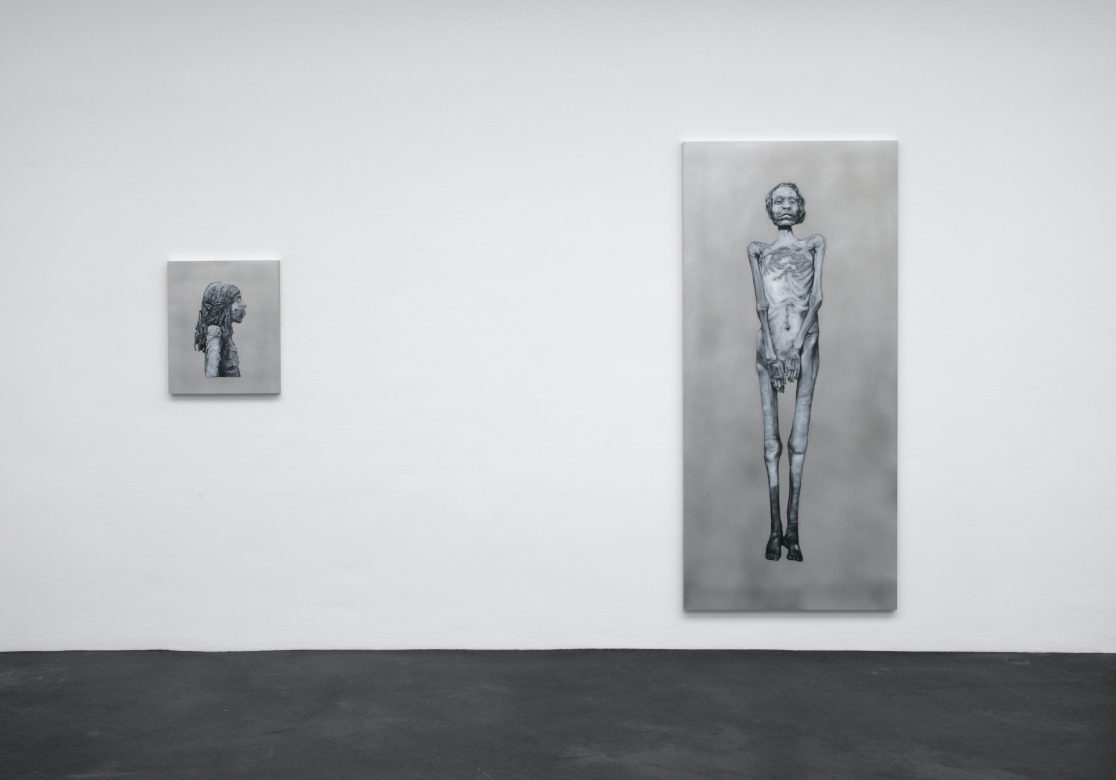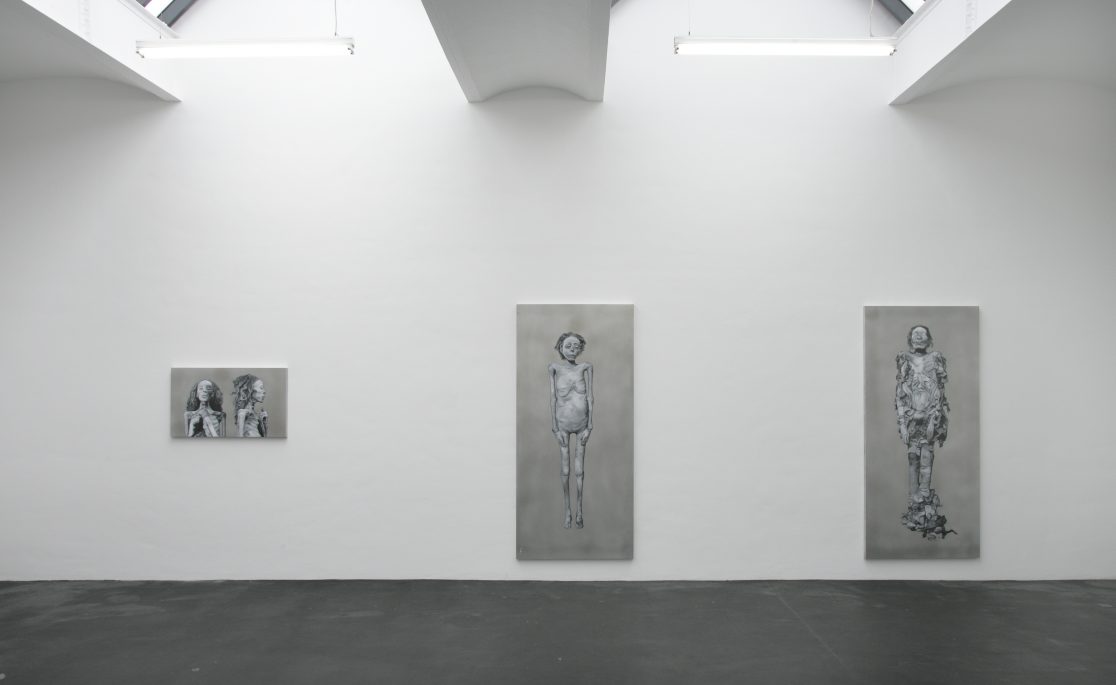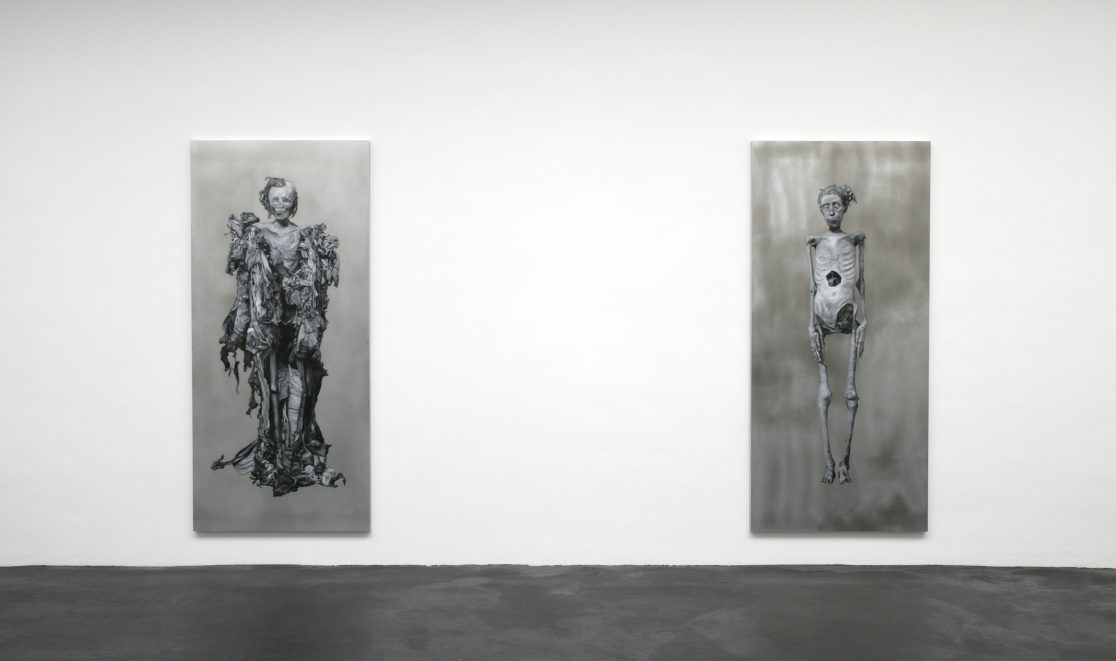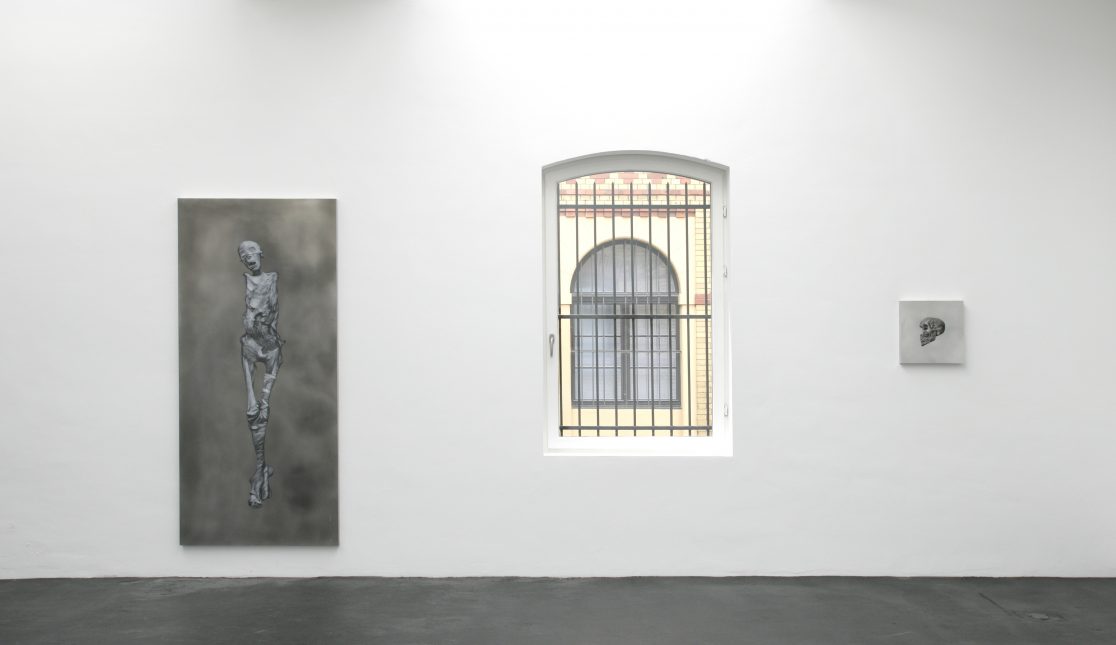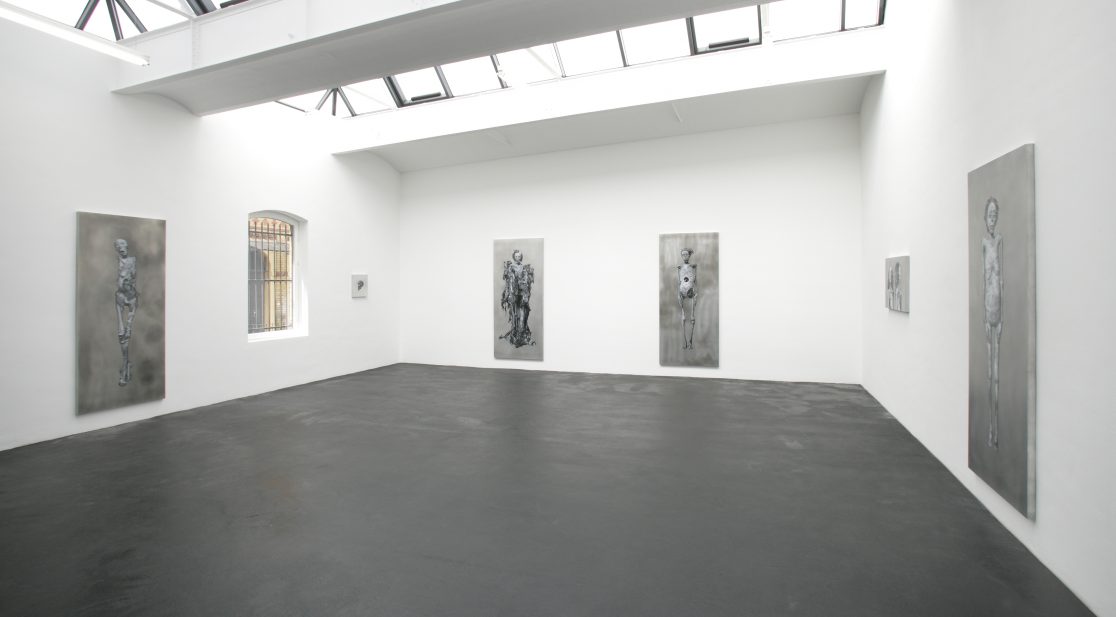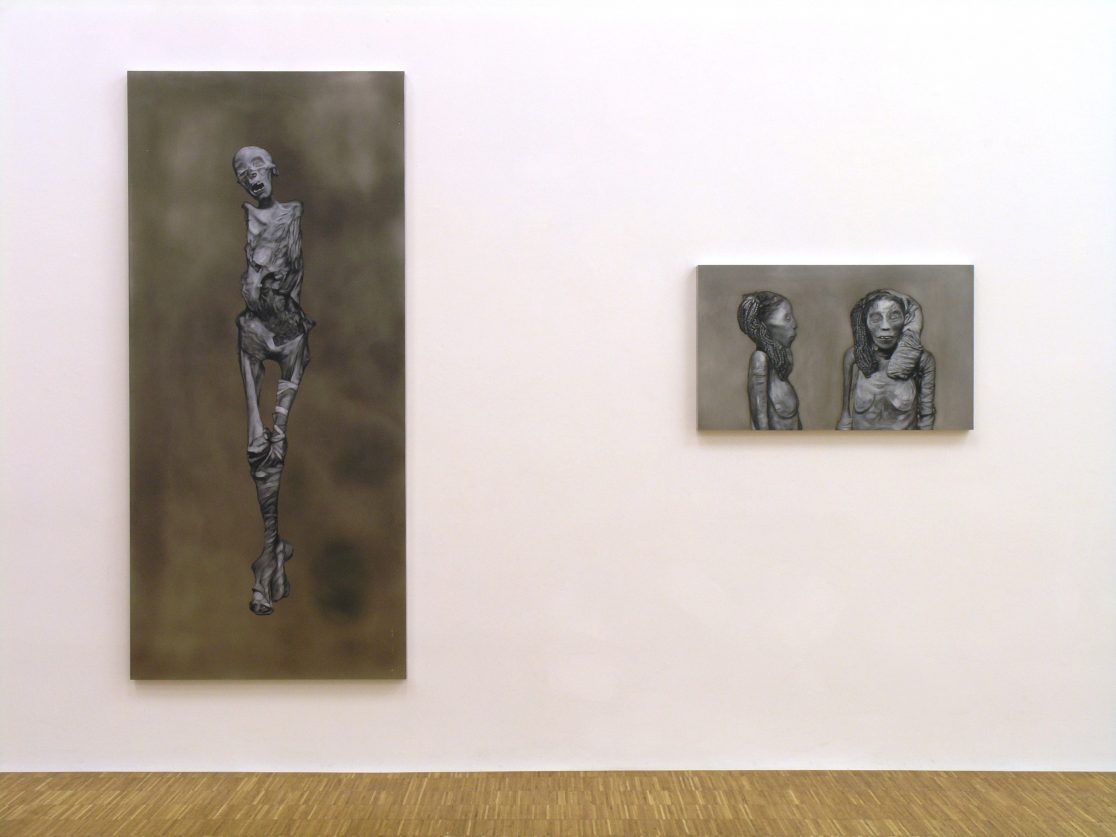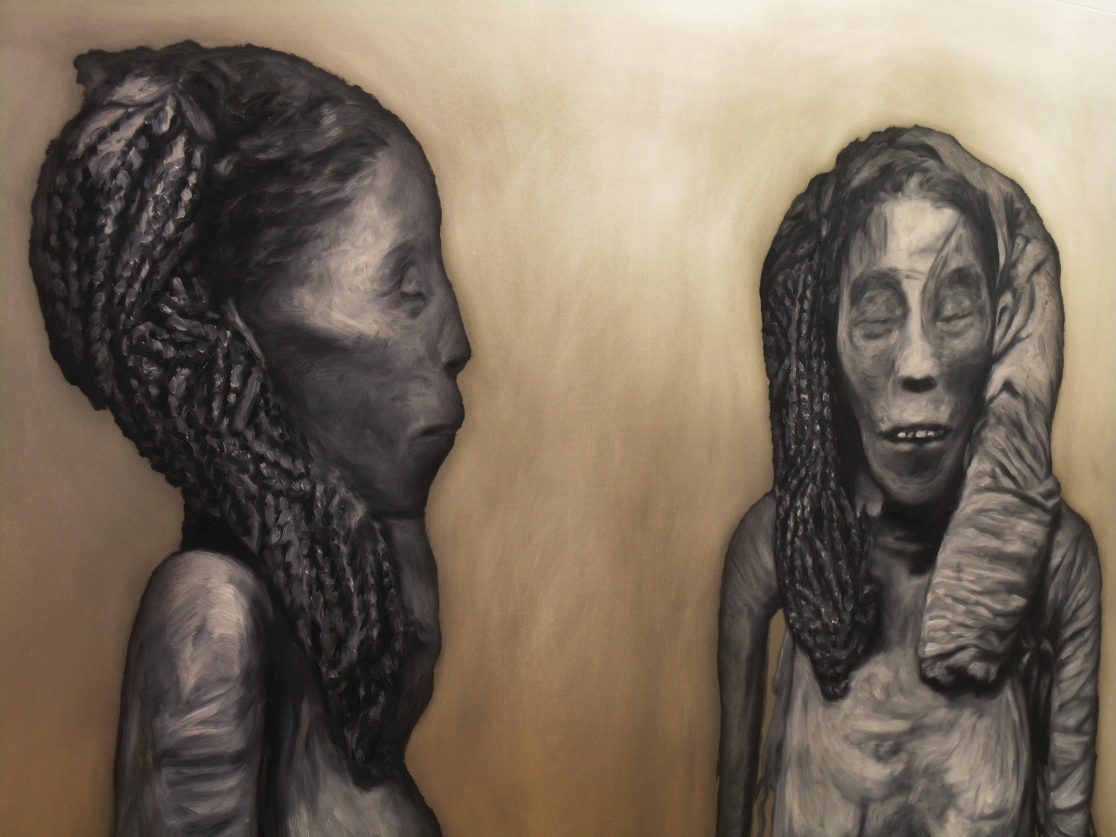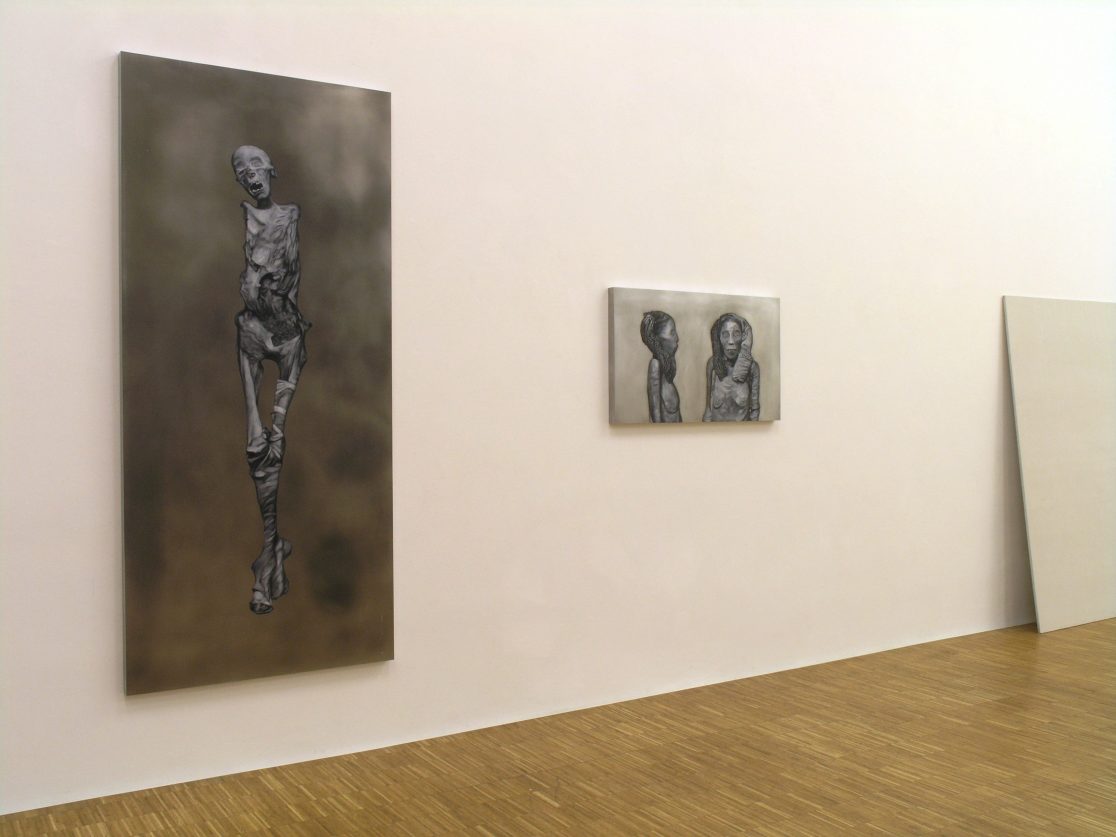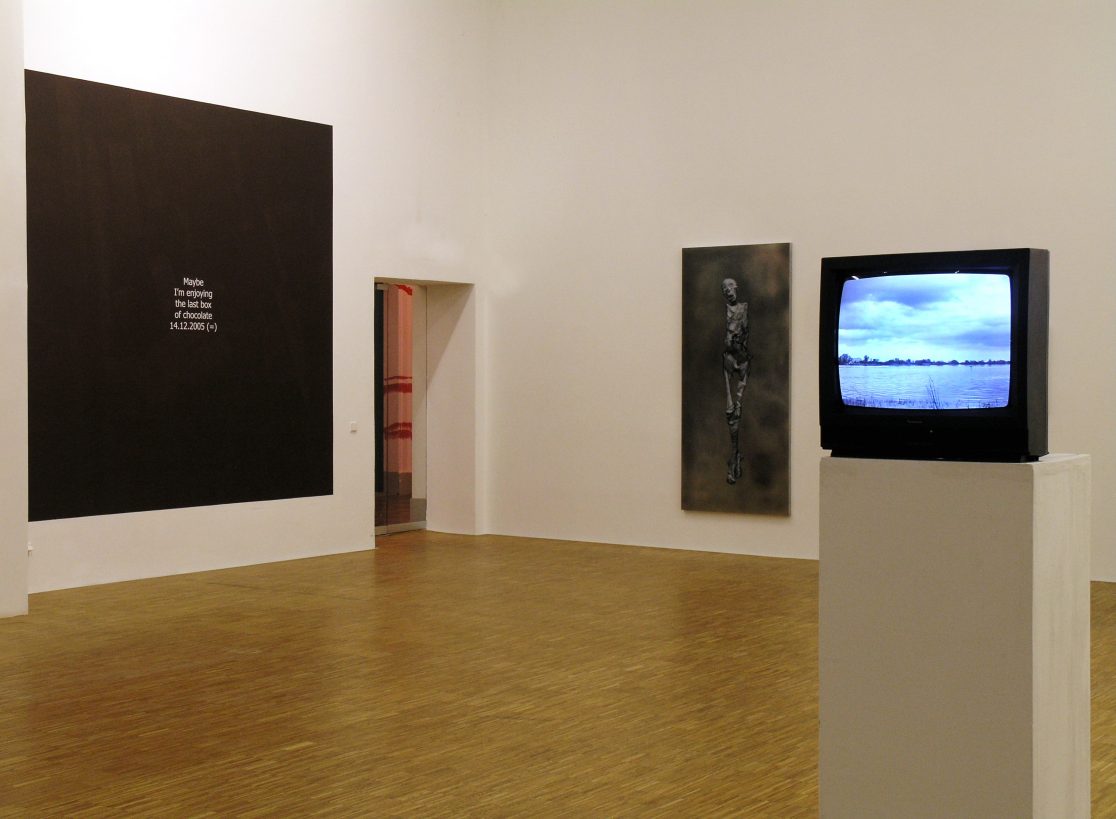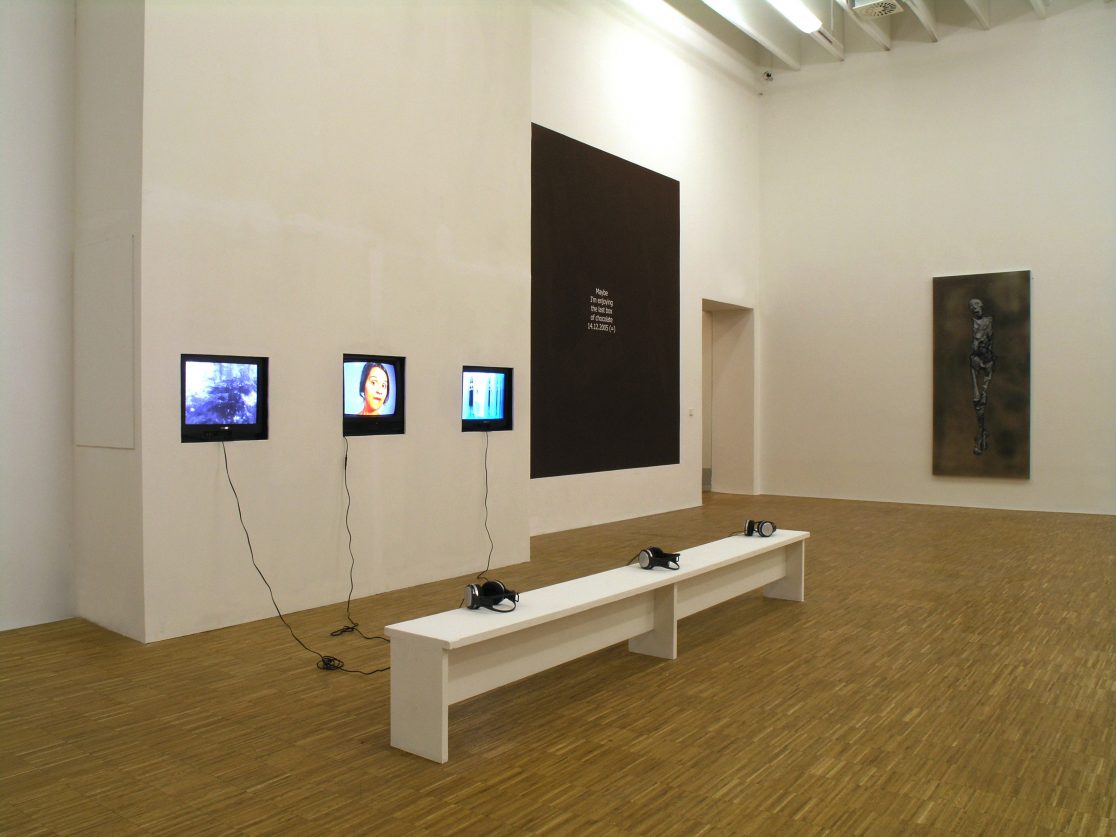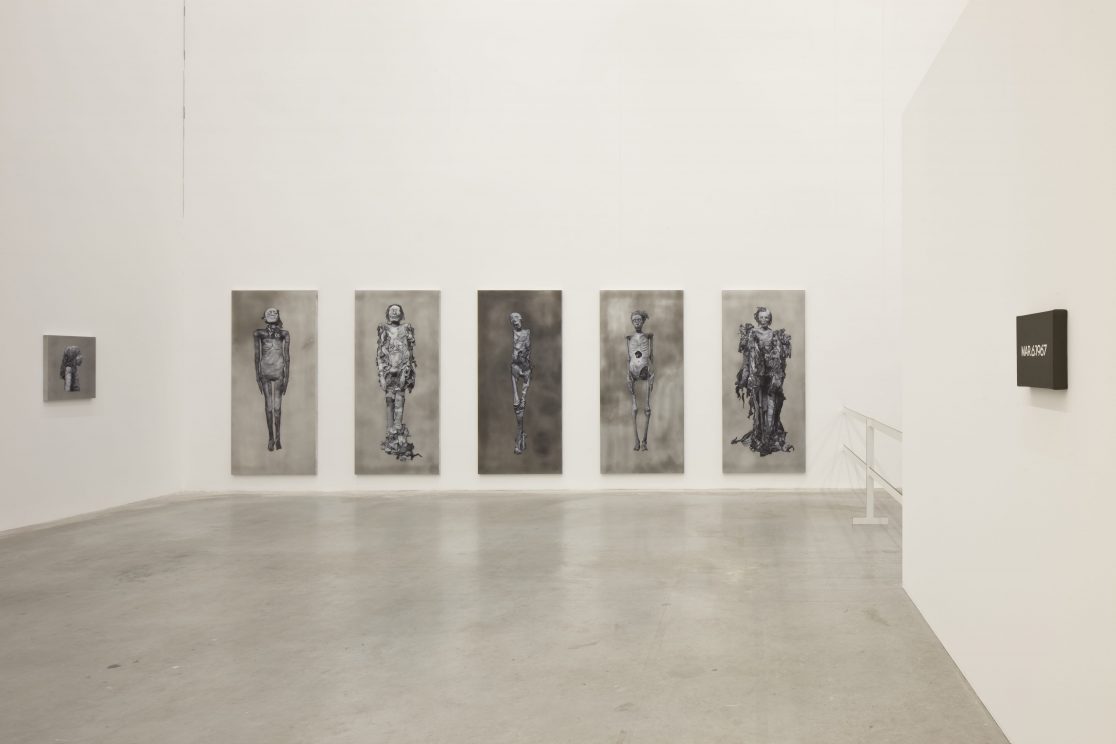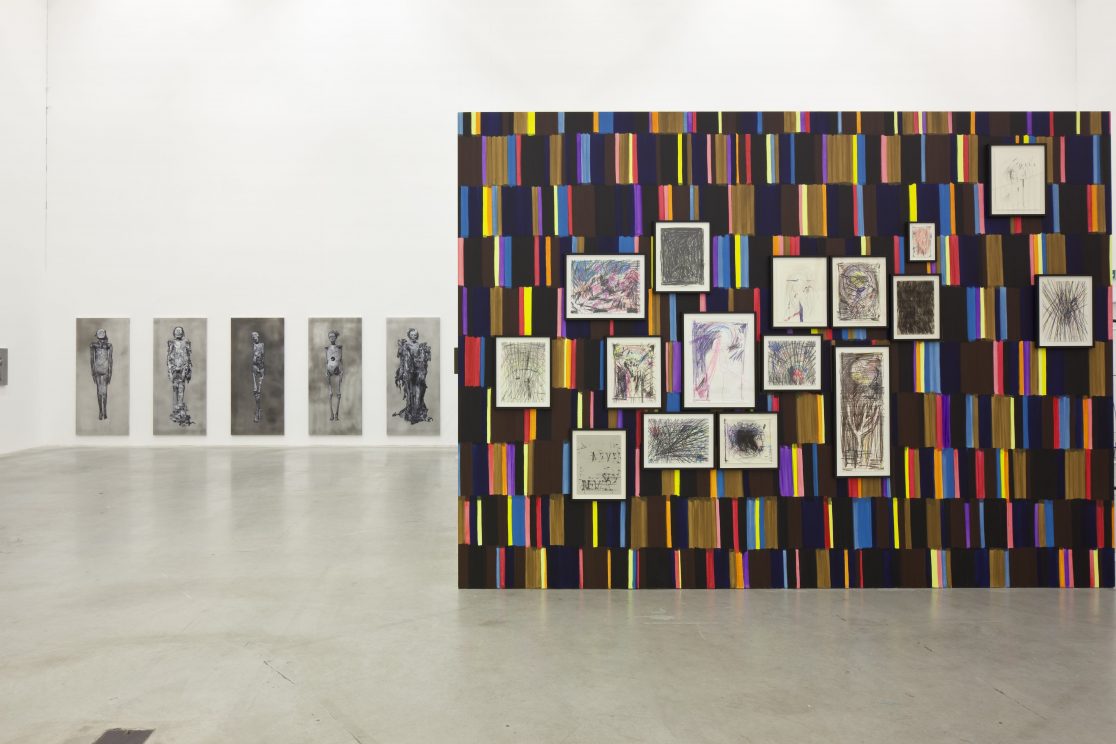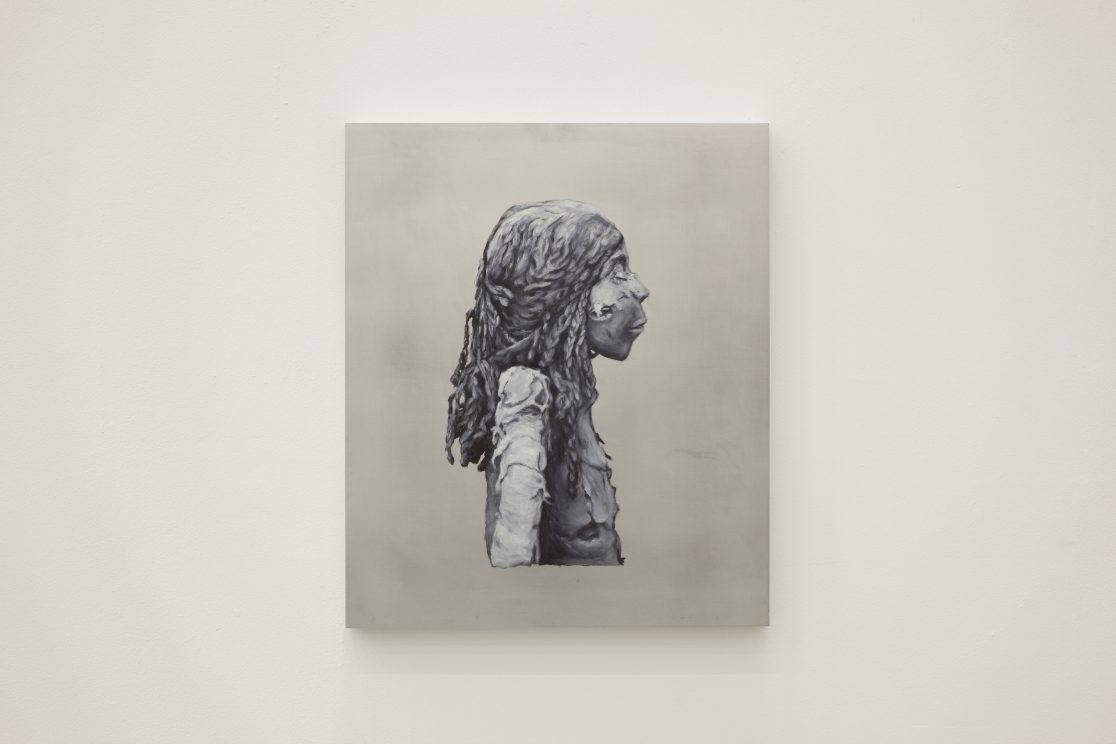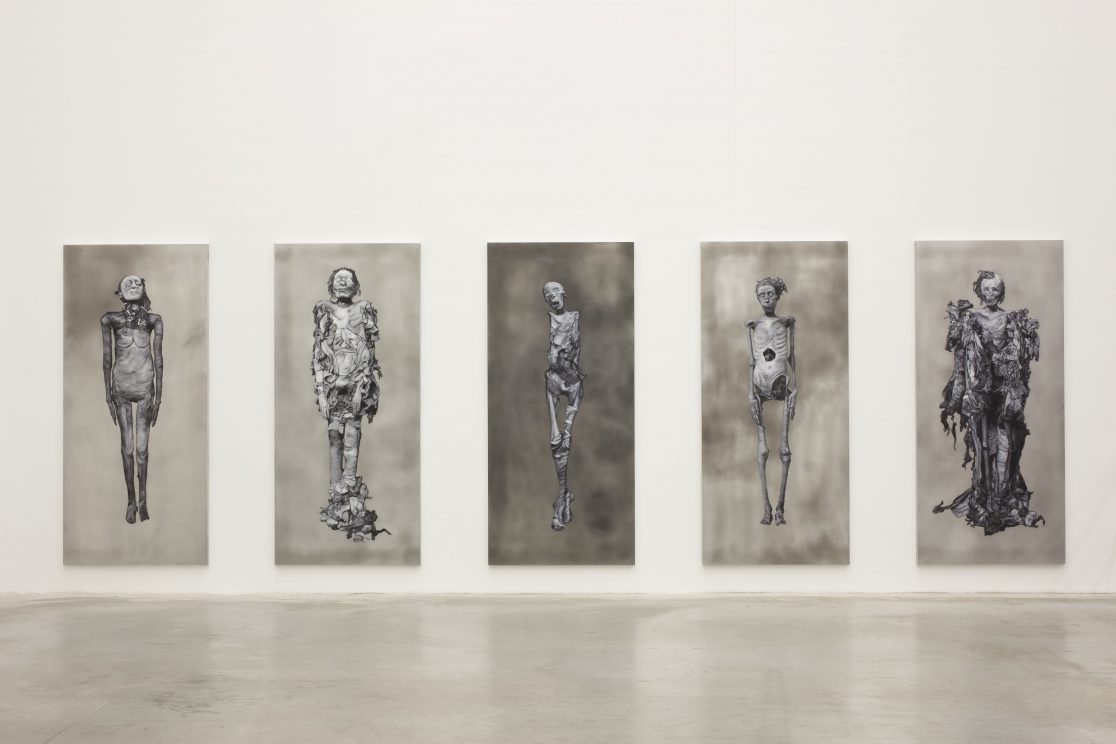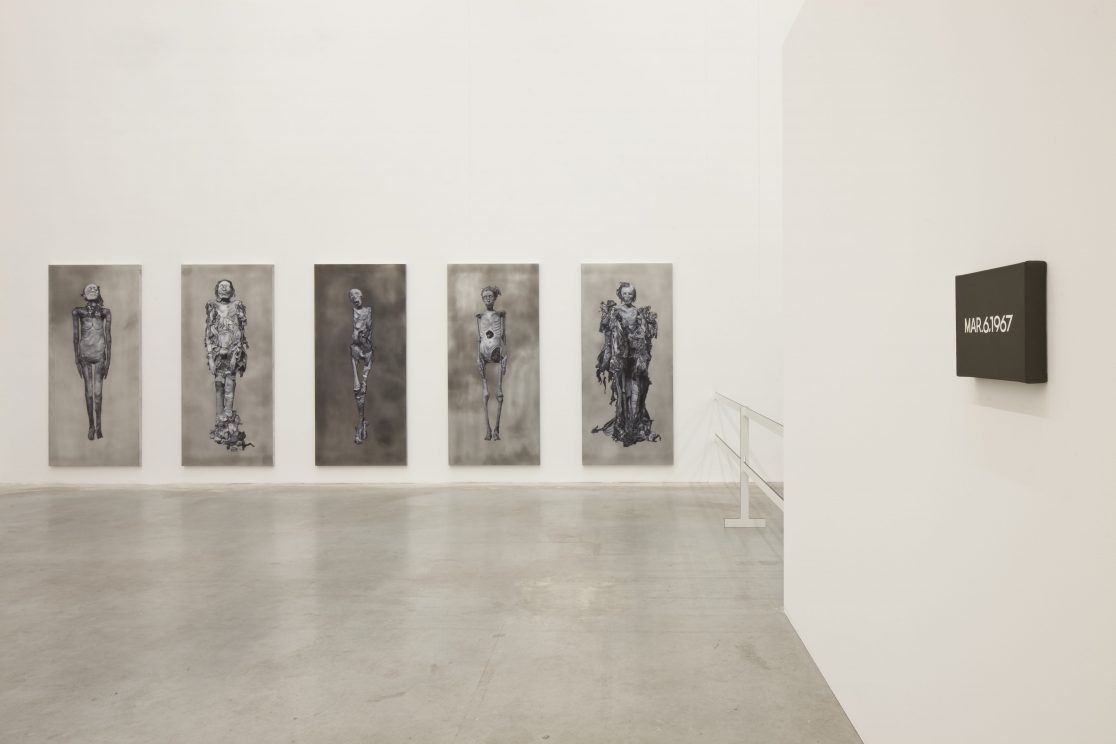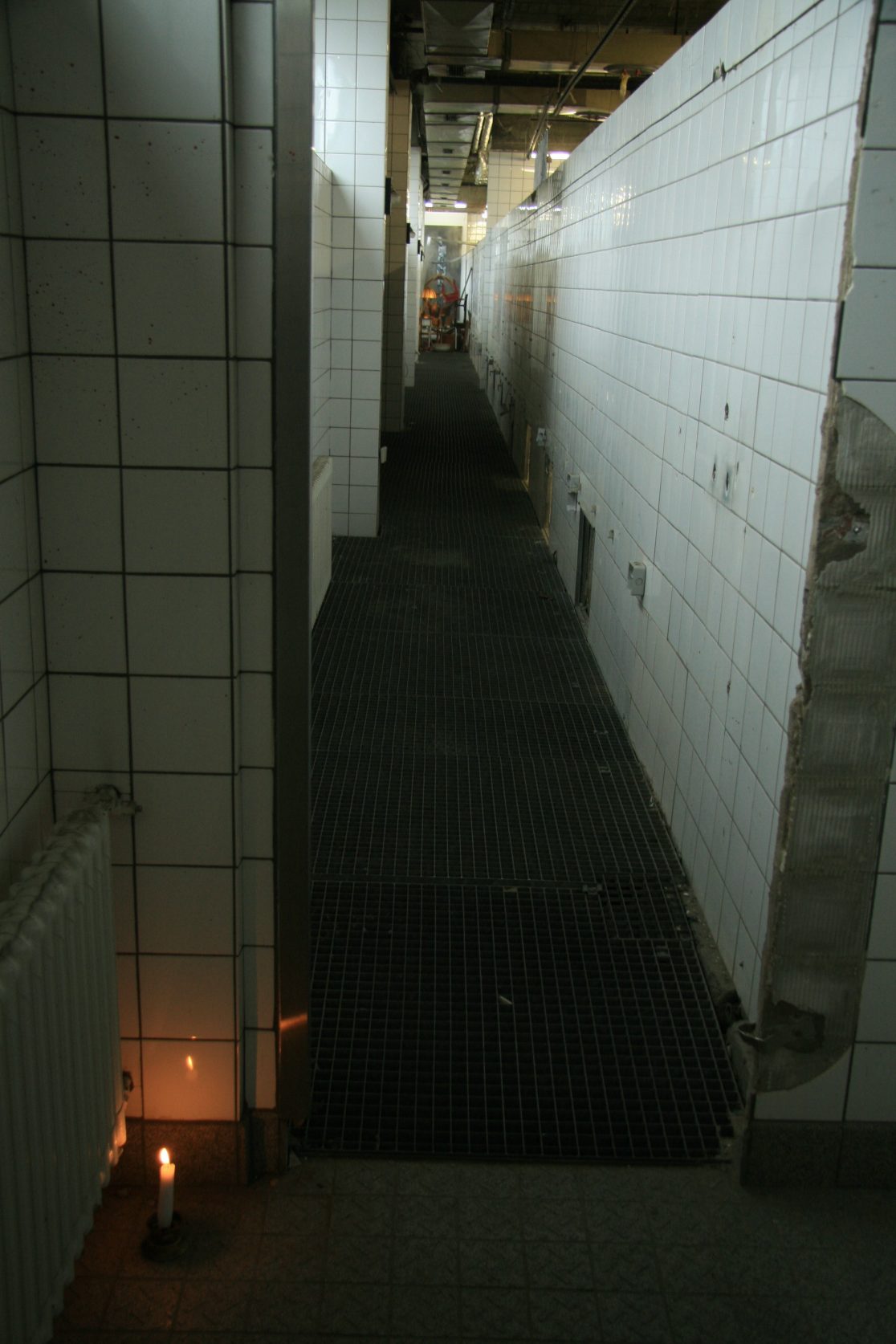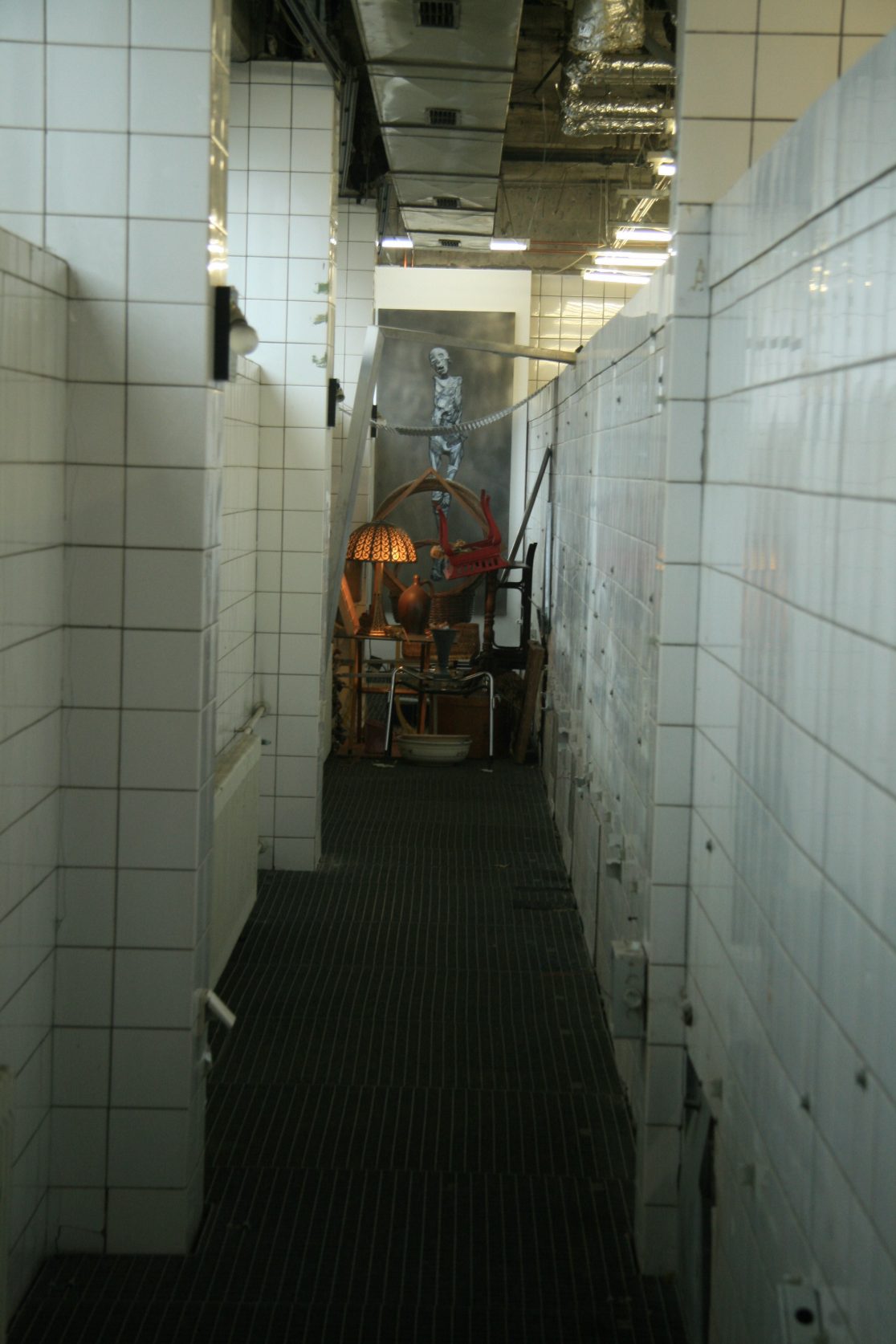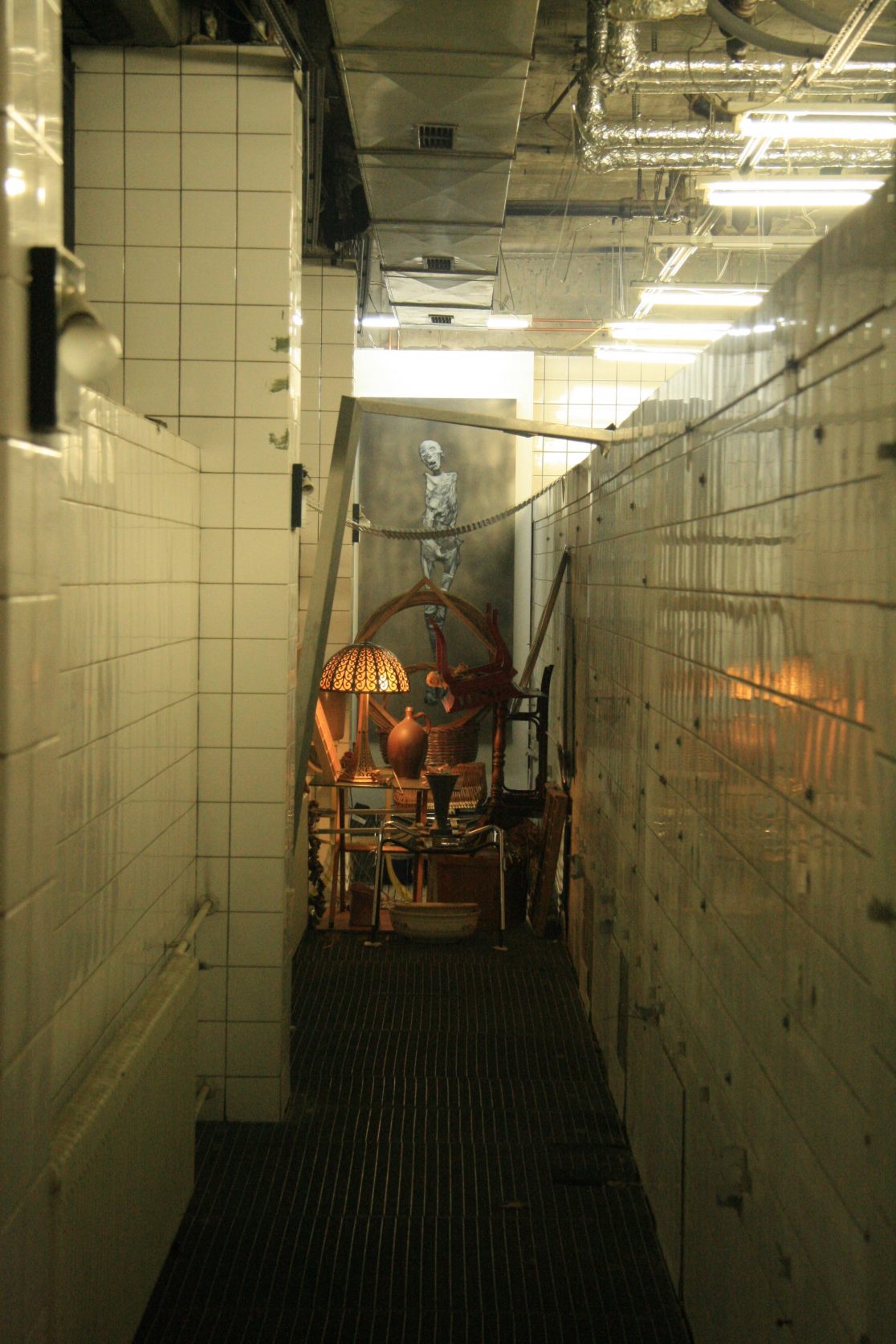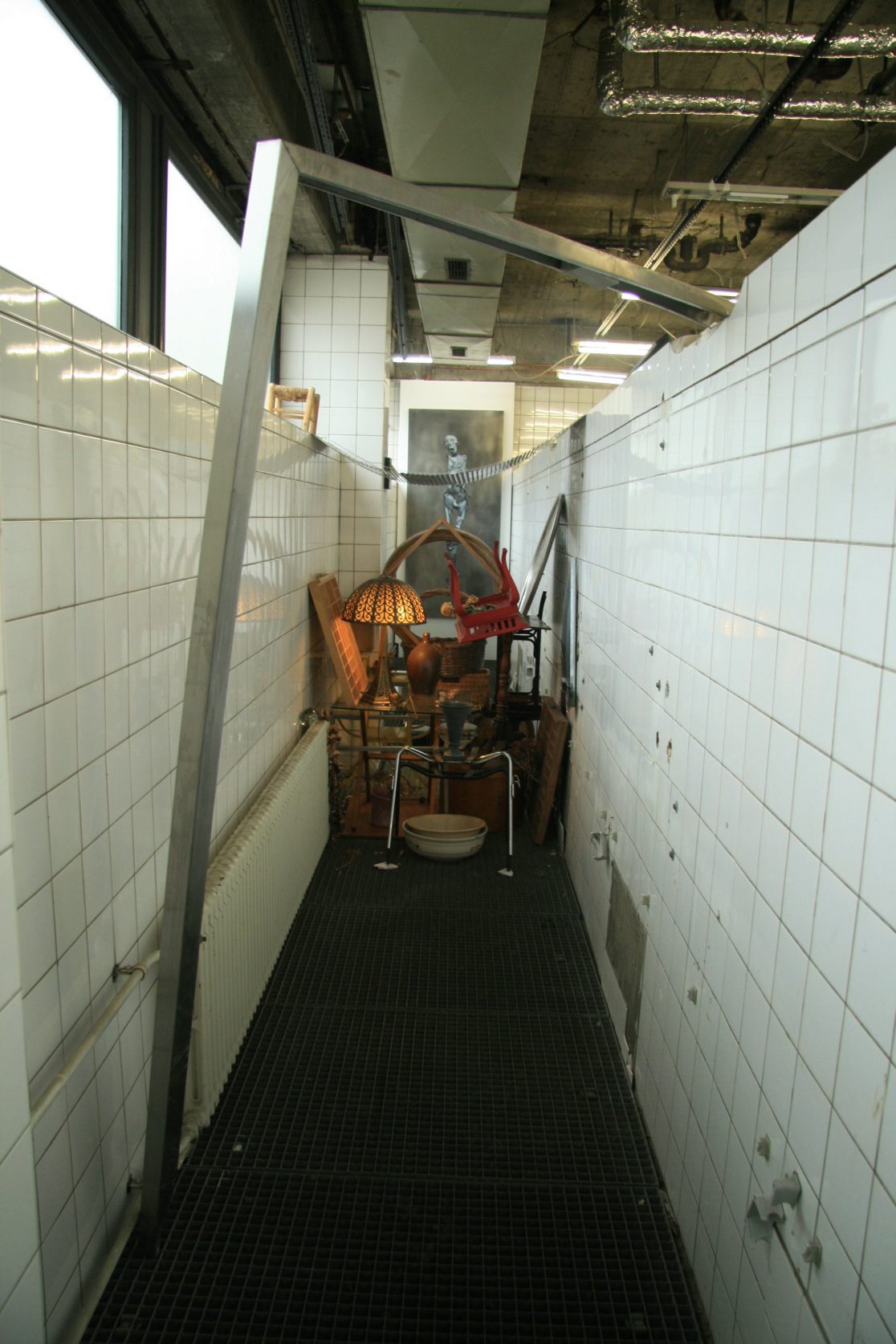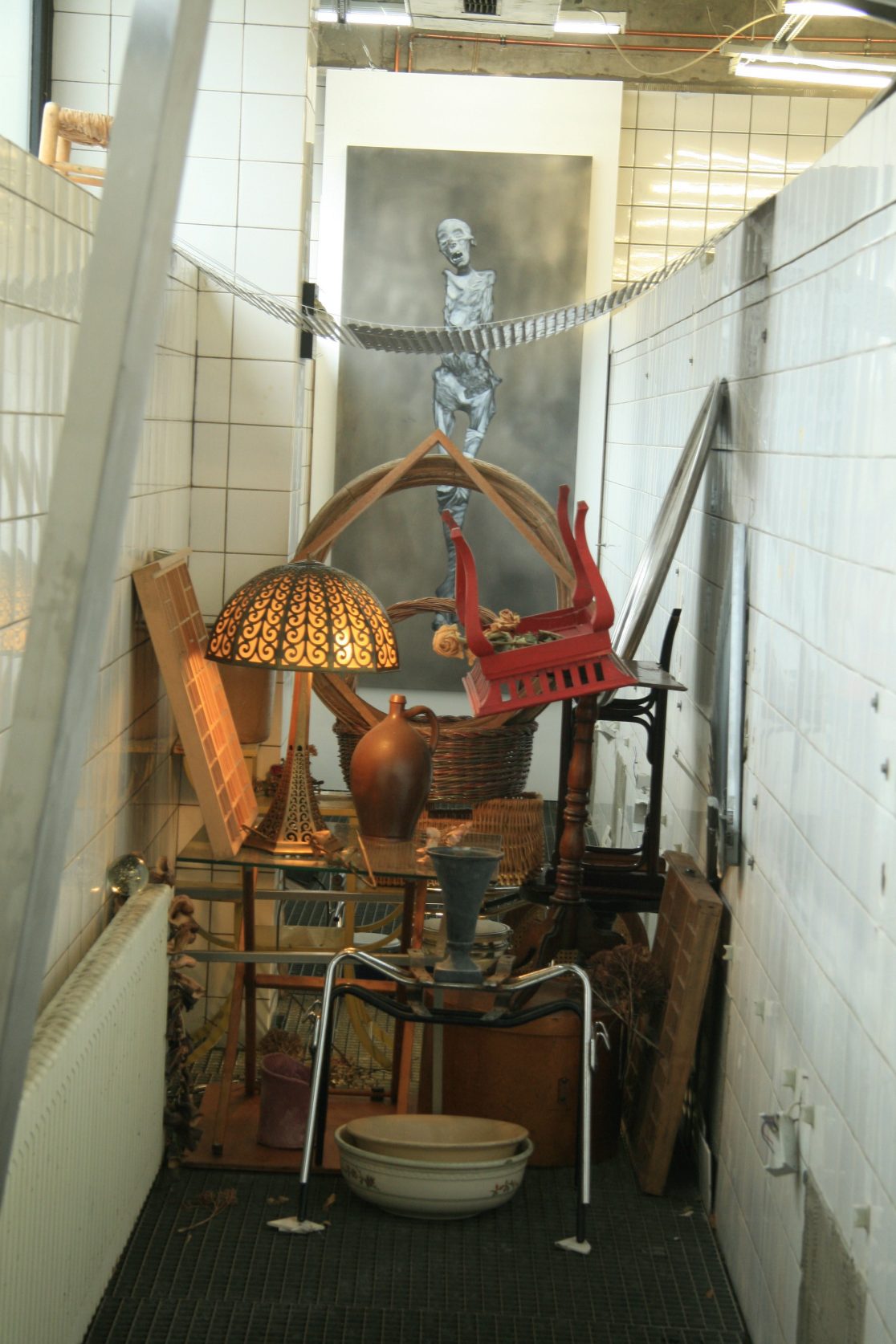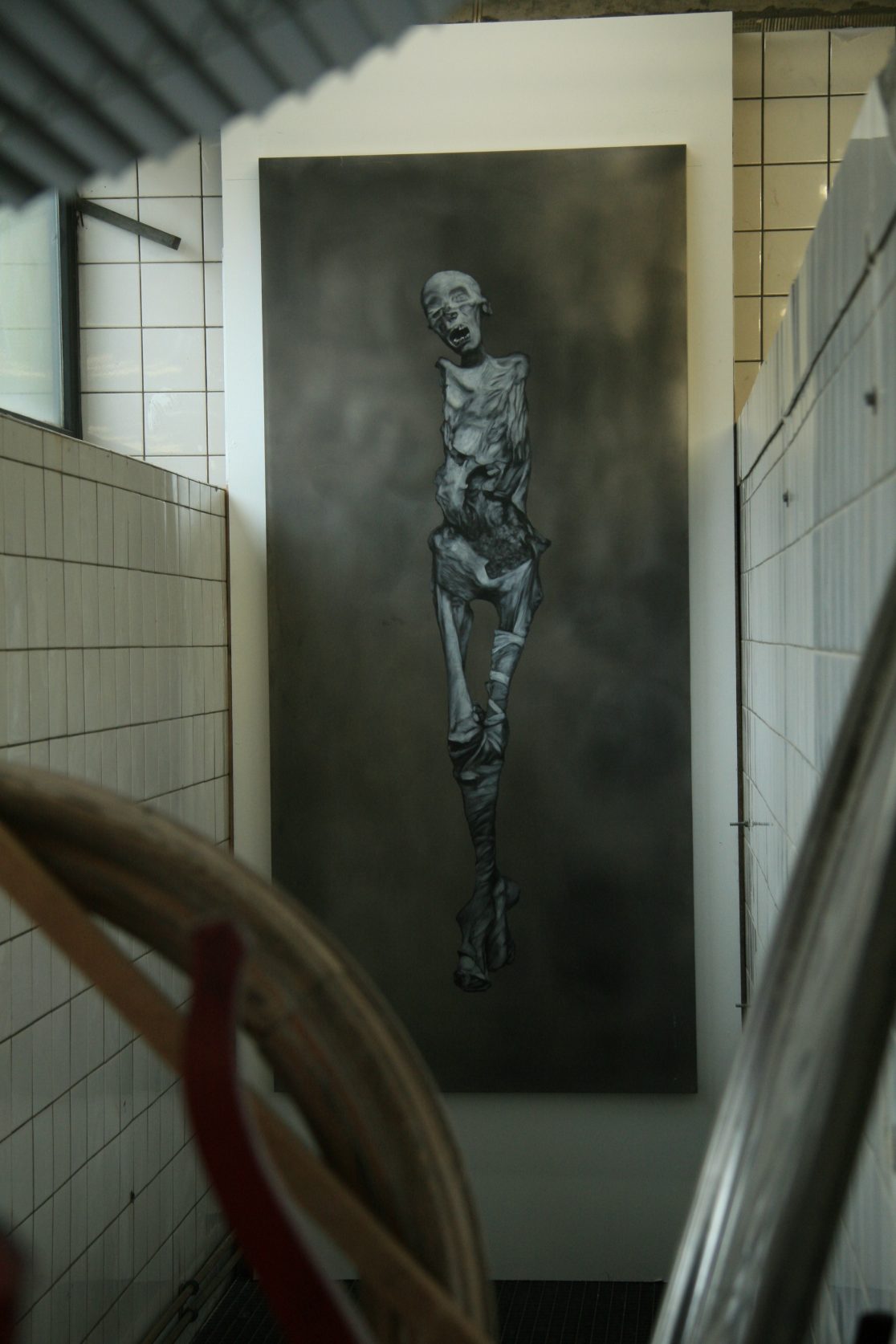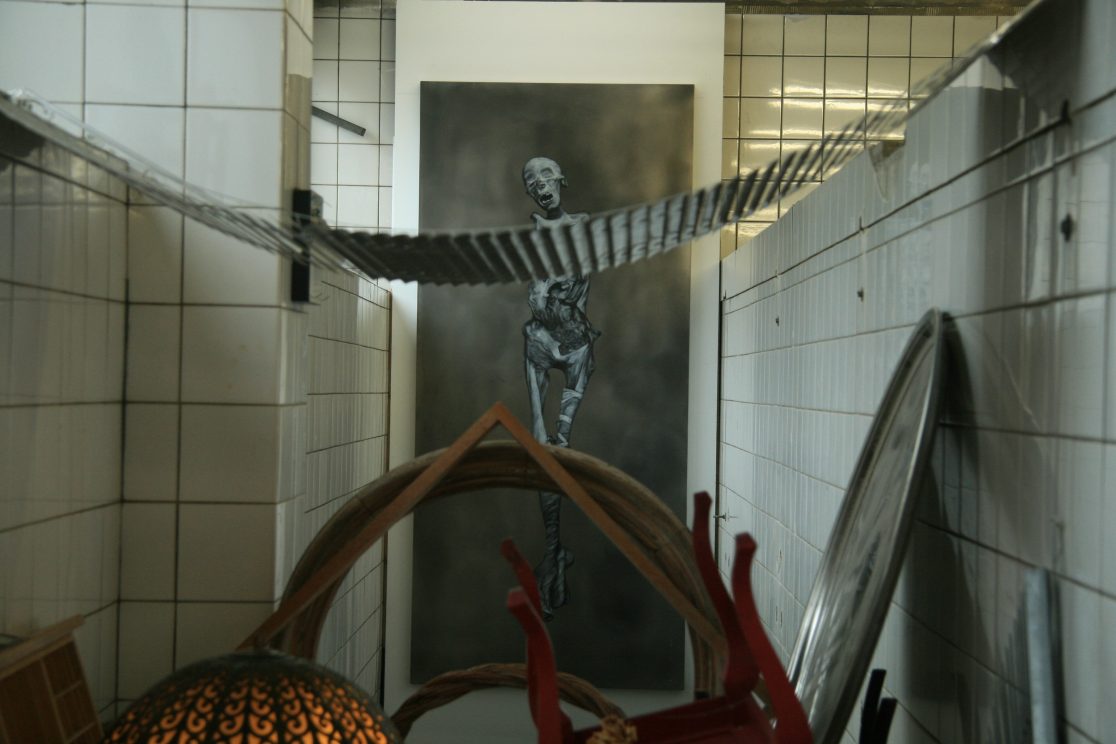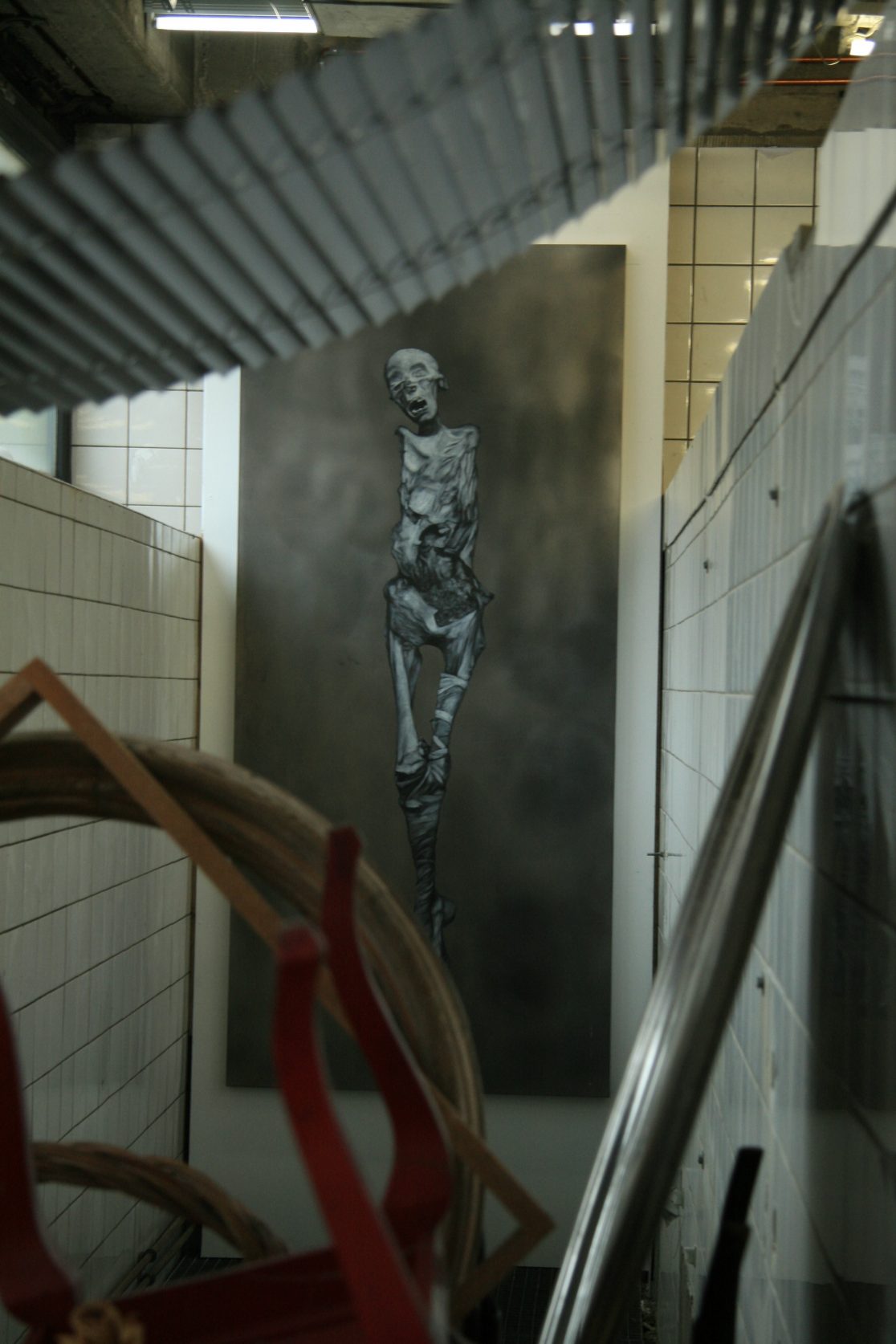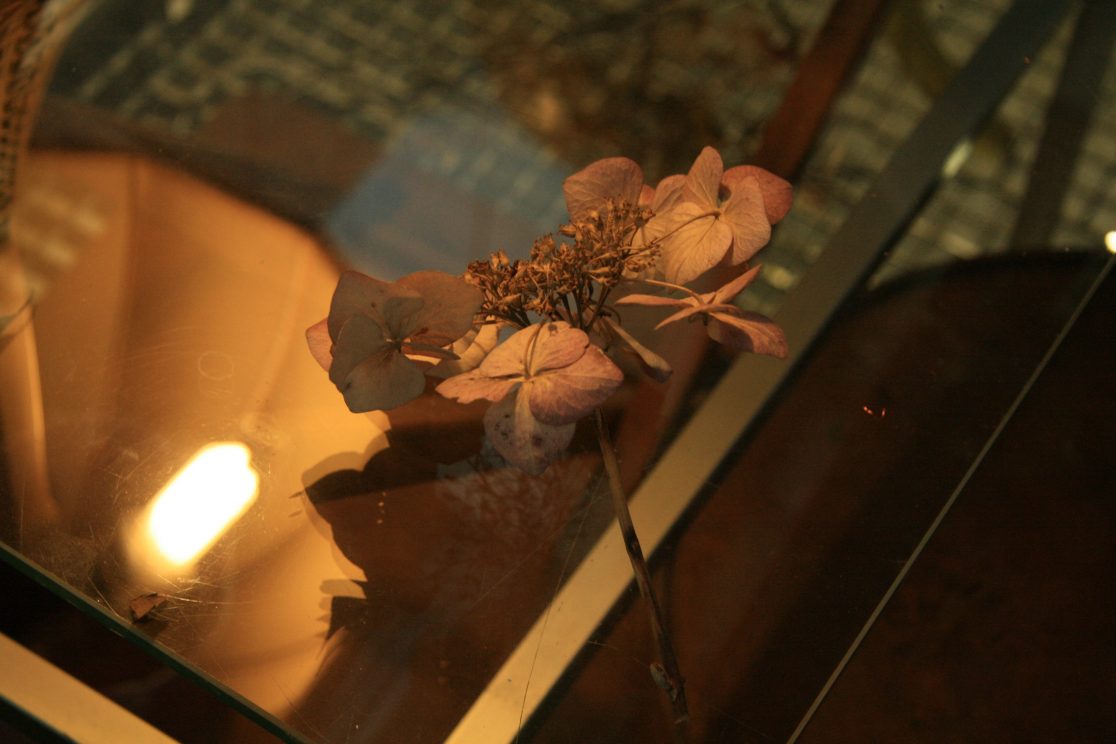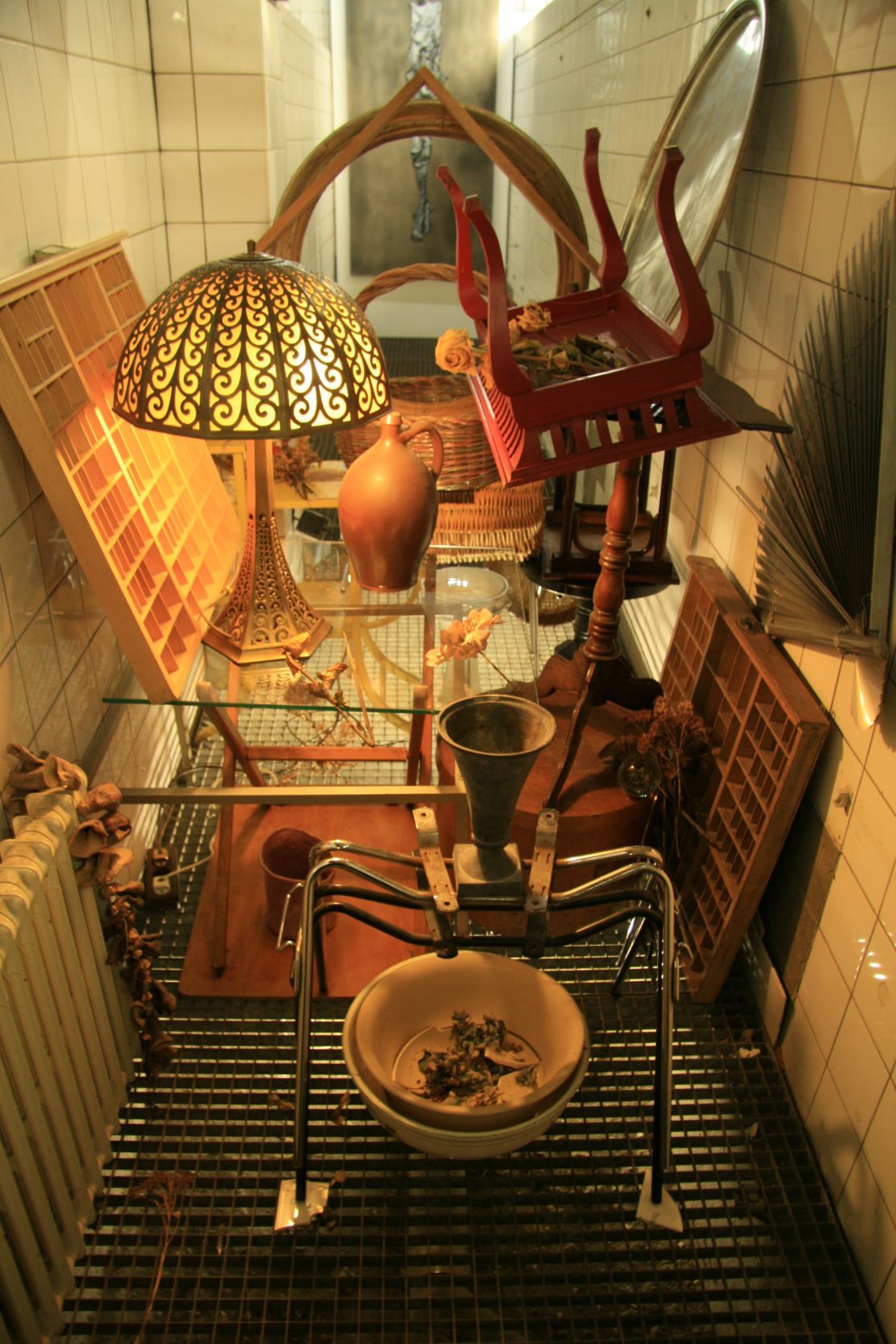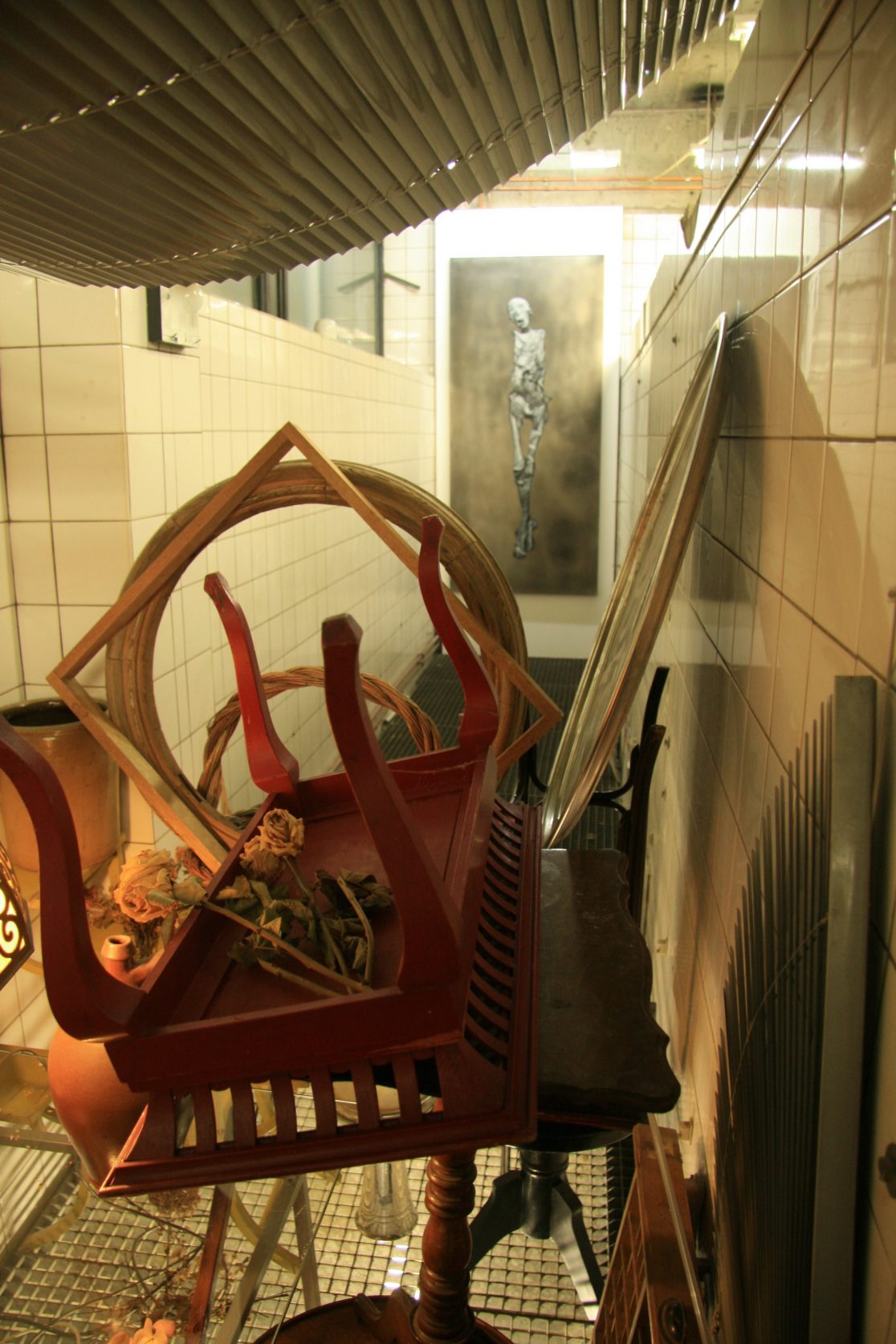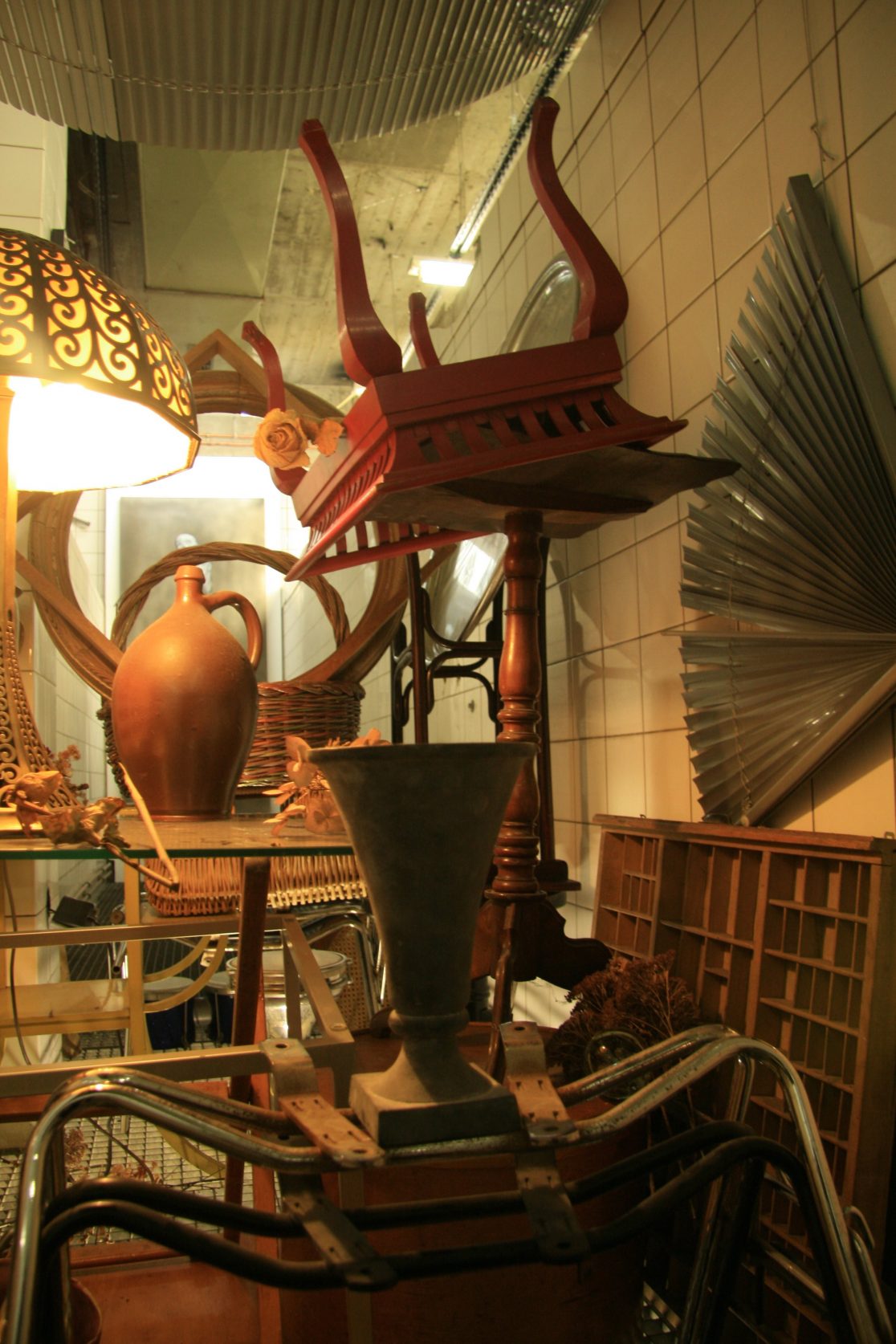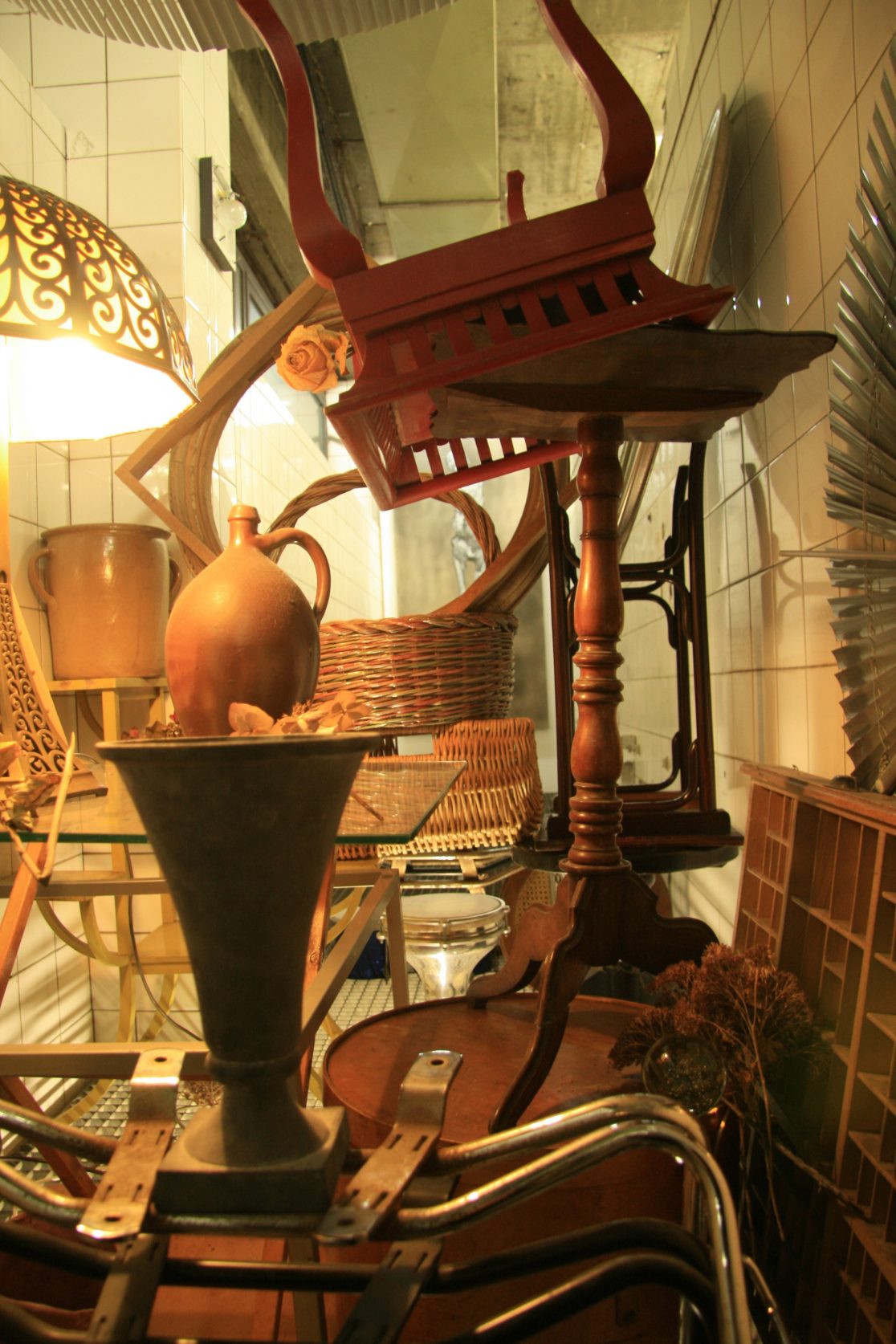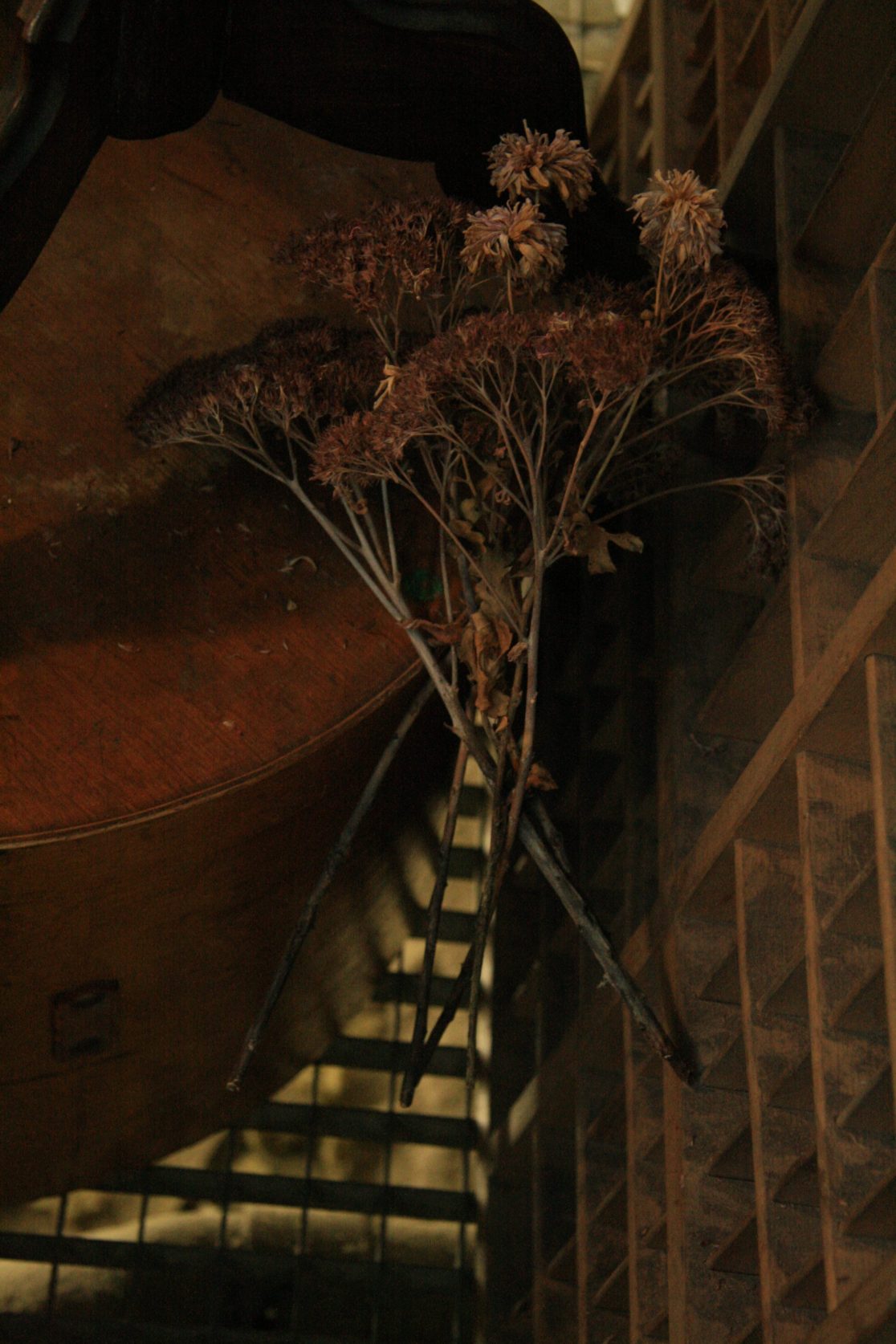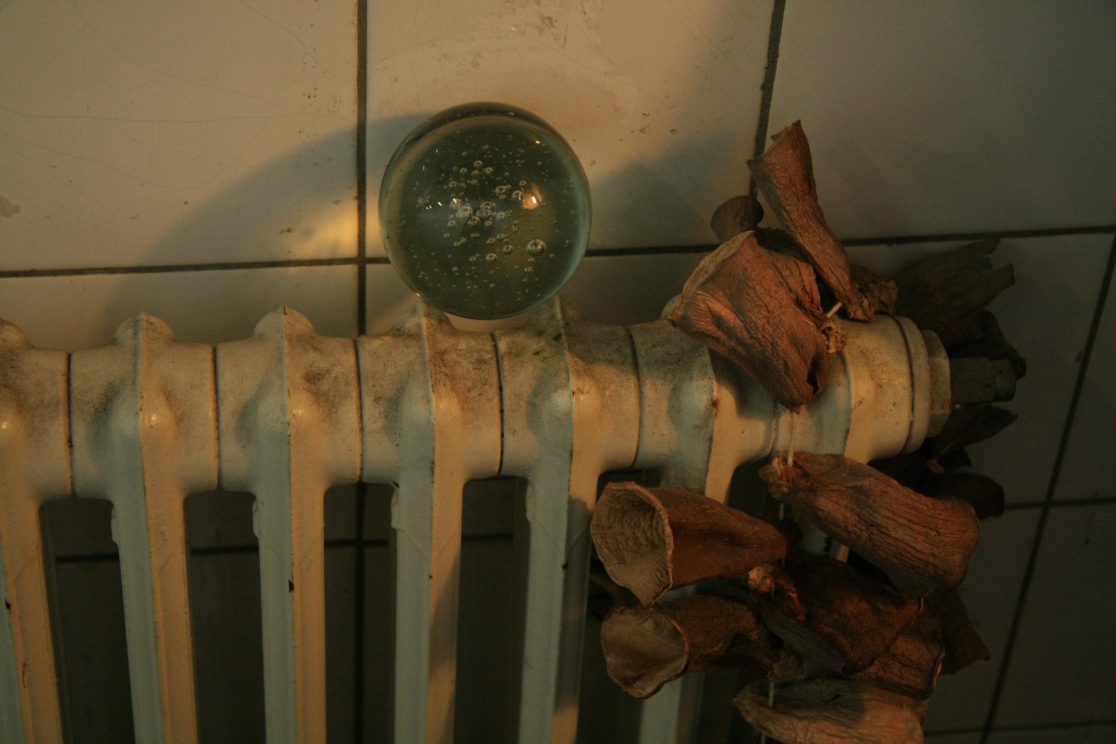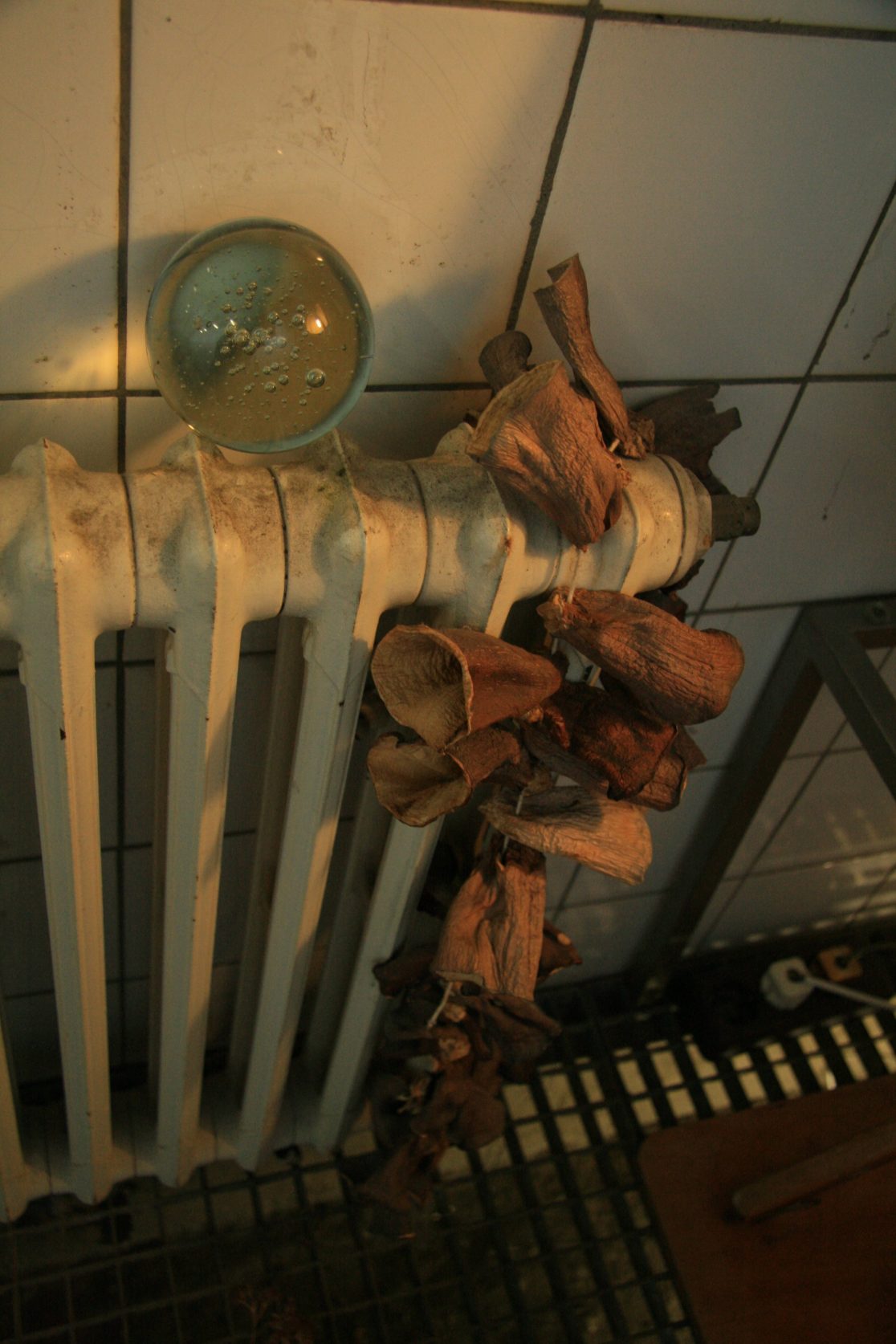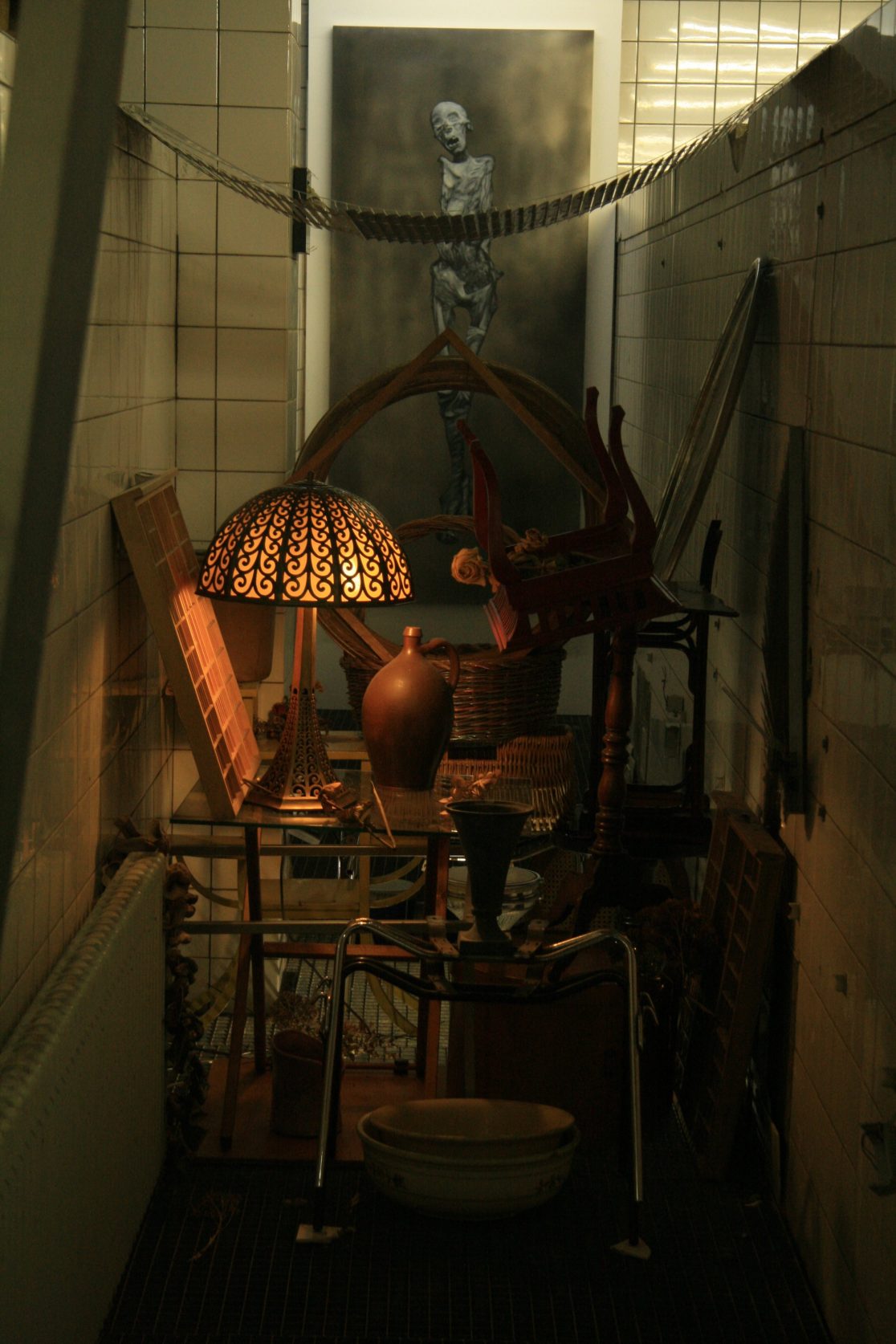The Royal Mummies, 2006
This group of paintings attempts to “remummify” the stunning black-and-white photographs, mostly taken by the Egyptologist Emile Brugsch, in Grafton Elliot Smith’s Catalogue Général des Antiquités Ég yptiennes du Musée du Caire (1912). The Egyptians had wanted to conserve themselves for eternity; by bringing them to the light of day again, the Egyptologists of the late nineteenth century set the same wheel of destruction in motion again that the embalmers had tried to halt.
They unwrapped the mummies, sometimes in a very crude manner—extremities like fingers, ears, or the penis frequently broke off and were lost—and the humidity in the museum made the skin turn dark.
The photos of Emile Brugsch conserve the state the mummies were in when they were first made visible after millennia. The time span of the photos is very short in comparison. The original negatives, prints, and catalogues will wither soon.
The aluminum “canvases” were chosen in the hope that they would survive better than canvas. The colors that were used for the paintings are lead white, carbon black, and a fake “mummy brown.” “Mumia egyptica vera” was a pigment made of ground mummy limbs that remained very popular with painters until the nineteenth century, partly because it contained natural asphalt (bitumen), which made this brown very fluid and paintable. Other ingredients, such as linen oil or dammar, were already in use by the Egyptians for both the conservation of bodies as well as paintings, and we still paint with them today. Grafton Elliot Smith, who was the founder of “Hyperdiffusionism,” might have been delighted by the idea that not only did painters’ recipes diffuse from ancient Egypt into modern Germany, but also the Realism first invented by Akhenaton (or his wife Nefertiti), whose (probable) skull can be seen on this page.
Texts:
Antje Majewski: Im Mumienland, 2006
Exhibitions:
Squatting, Temporäre Kunsthalle, Berlin 2010
Berliner Simulation, Stattbad Wedding, Berlin 2009
The Royal Mummies, neugerriemschneider, Berlin / 2006
Soleil Noir. Depression und Gesellschaft, Salzburger Kunstverein,
Salzburg, Austria / 2006
Publications:
squatting. erinnern, vergessen, besetzen, Ed. Angela Rosenberg, Tilo Schulz, Jörg van den Berg. Temporäre Kunsthalle, Berlin 2010
My Very Gestures, Salzburger Kunstverein, Sternberg Press 2009
